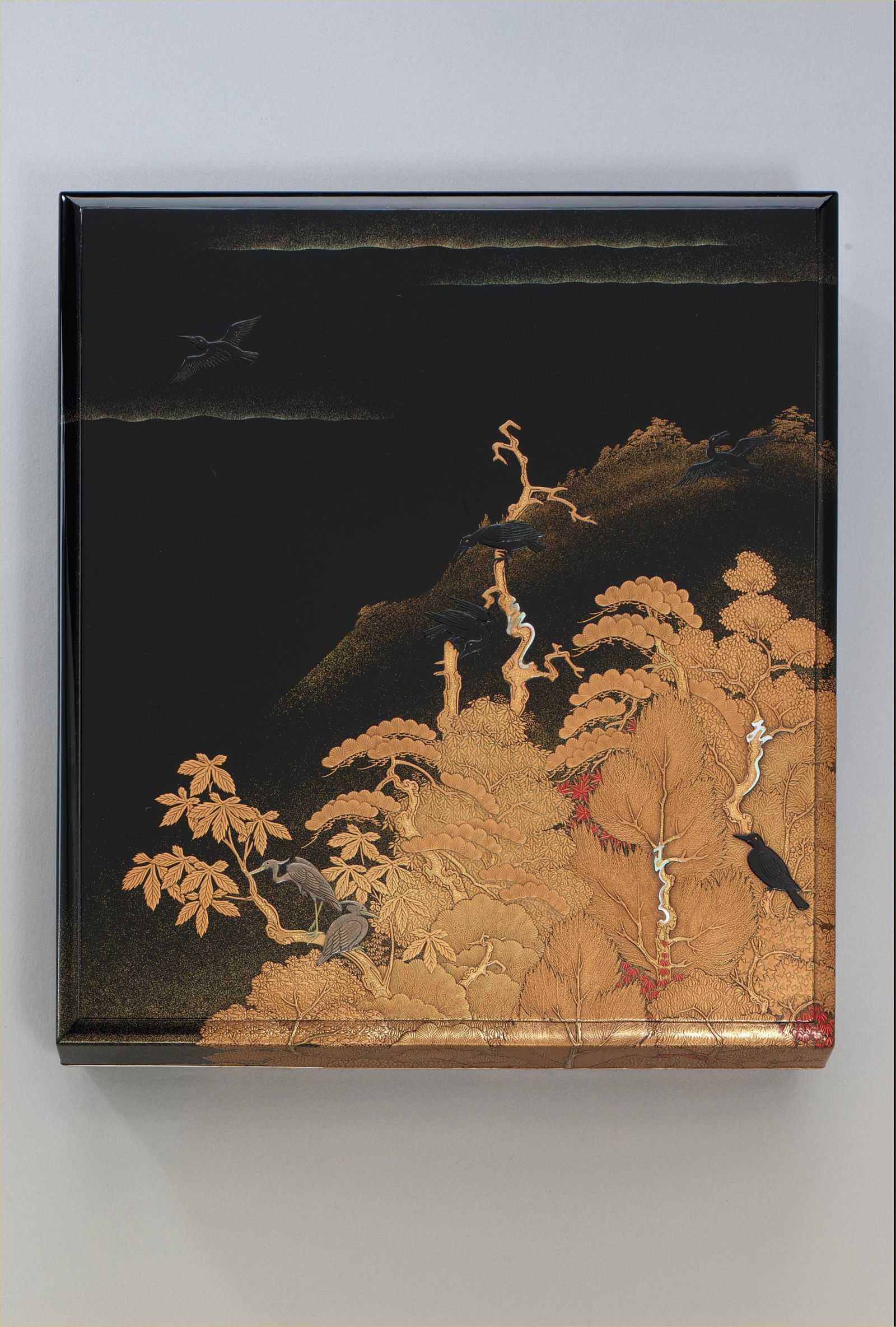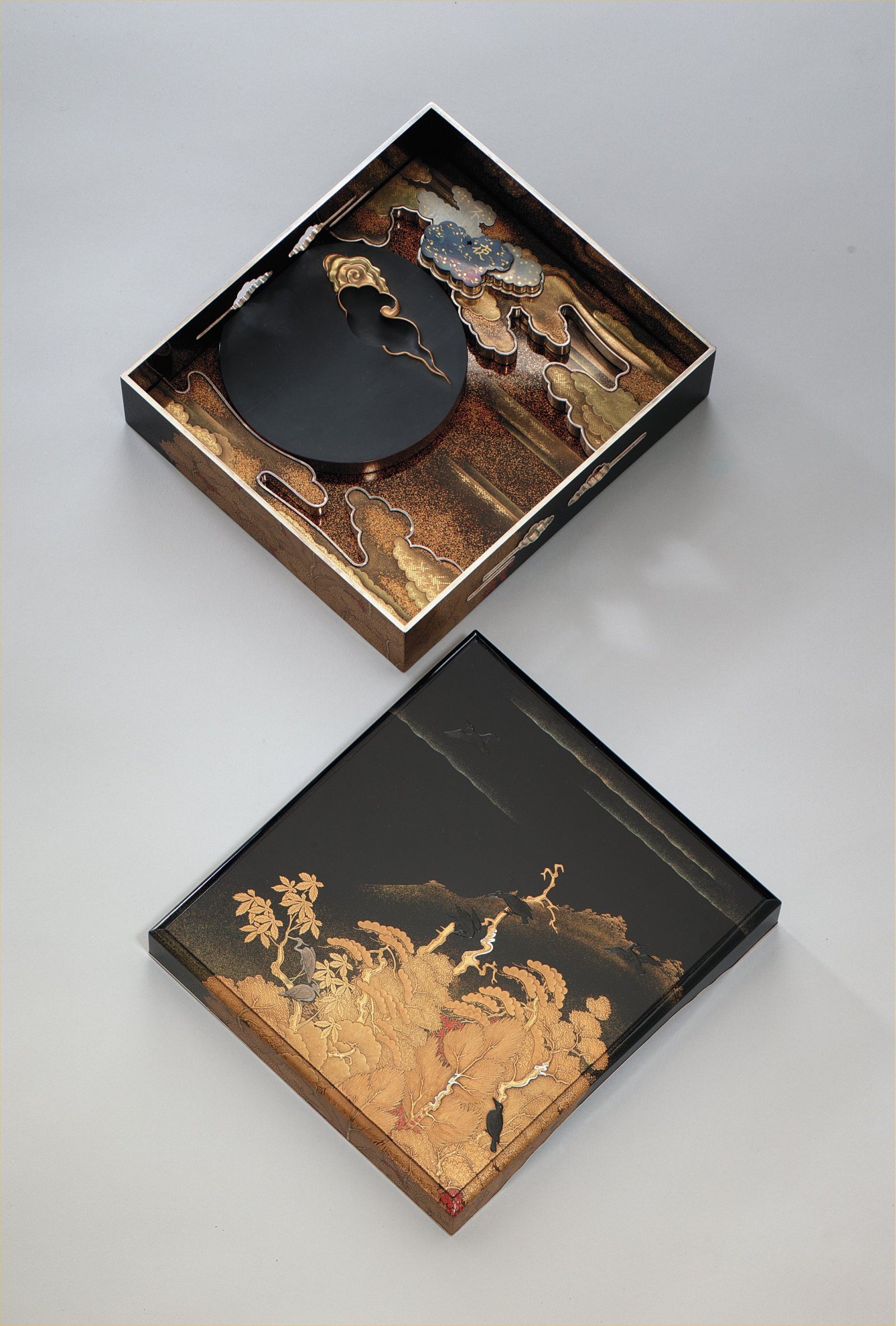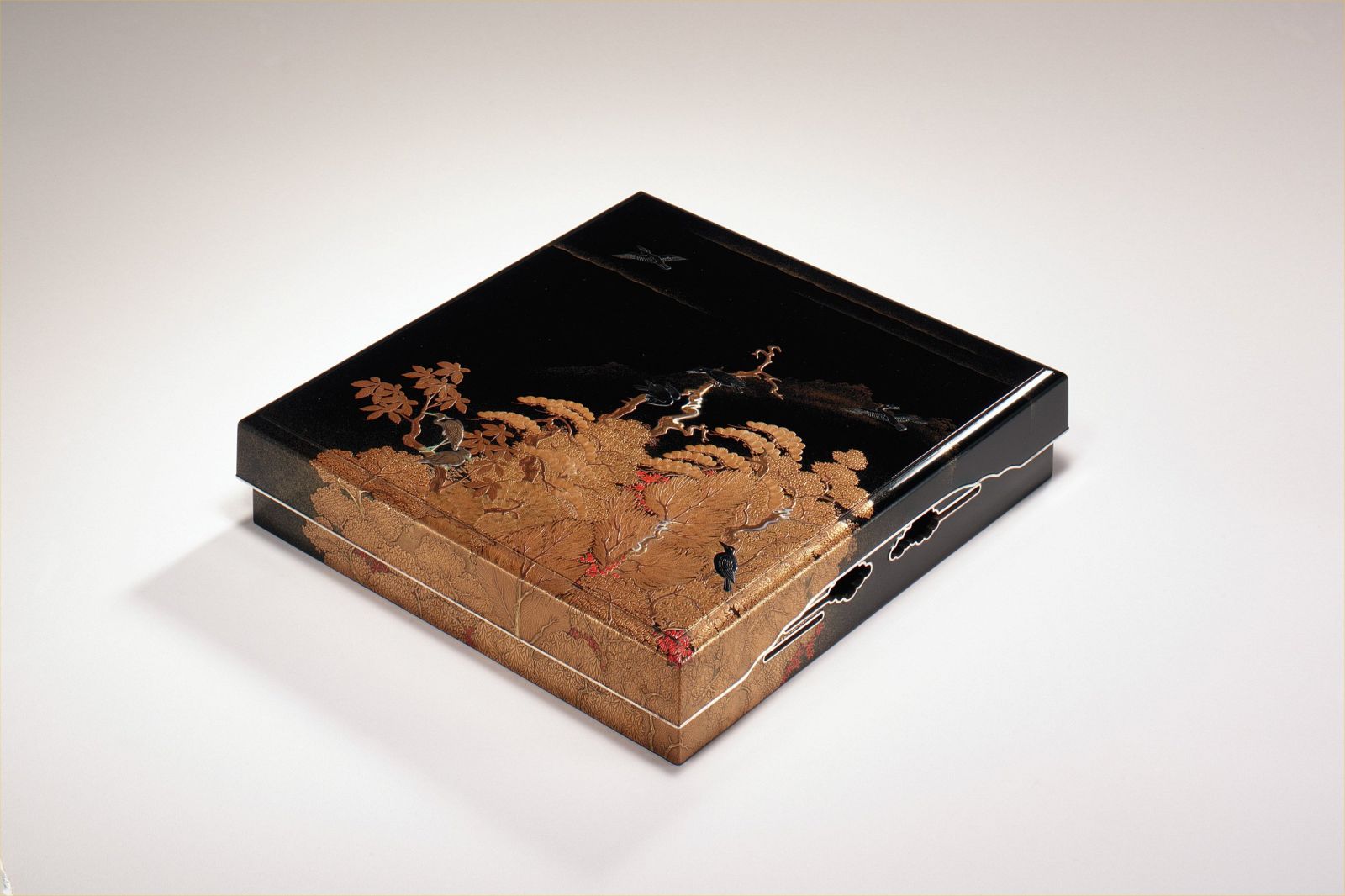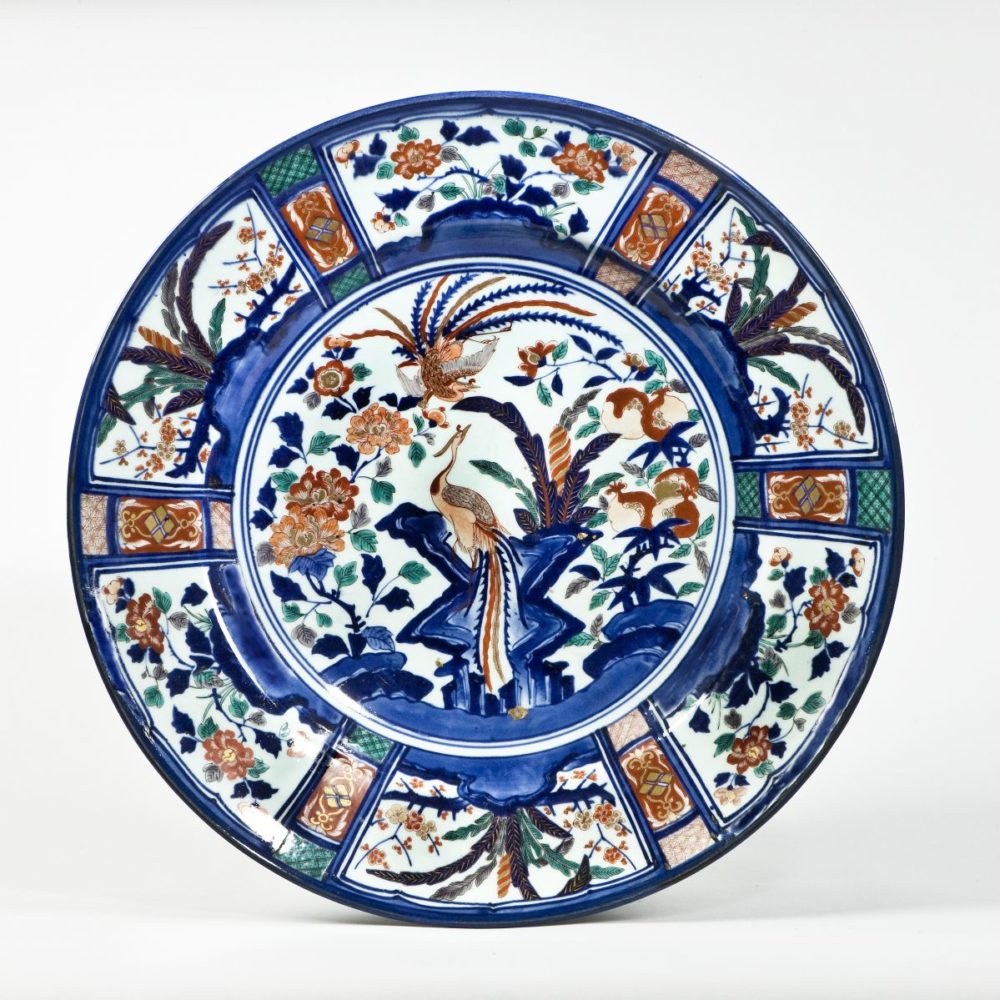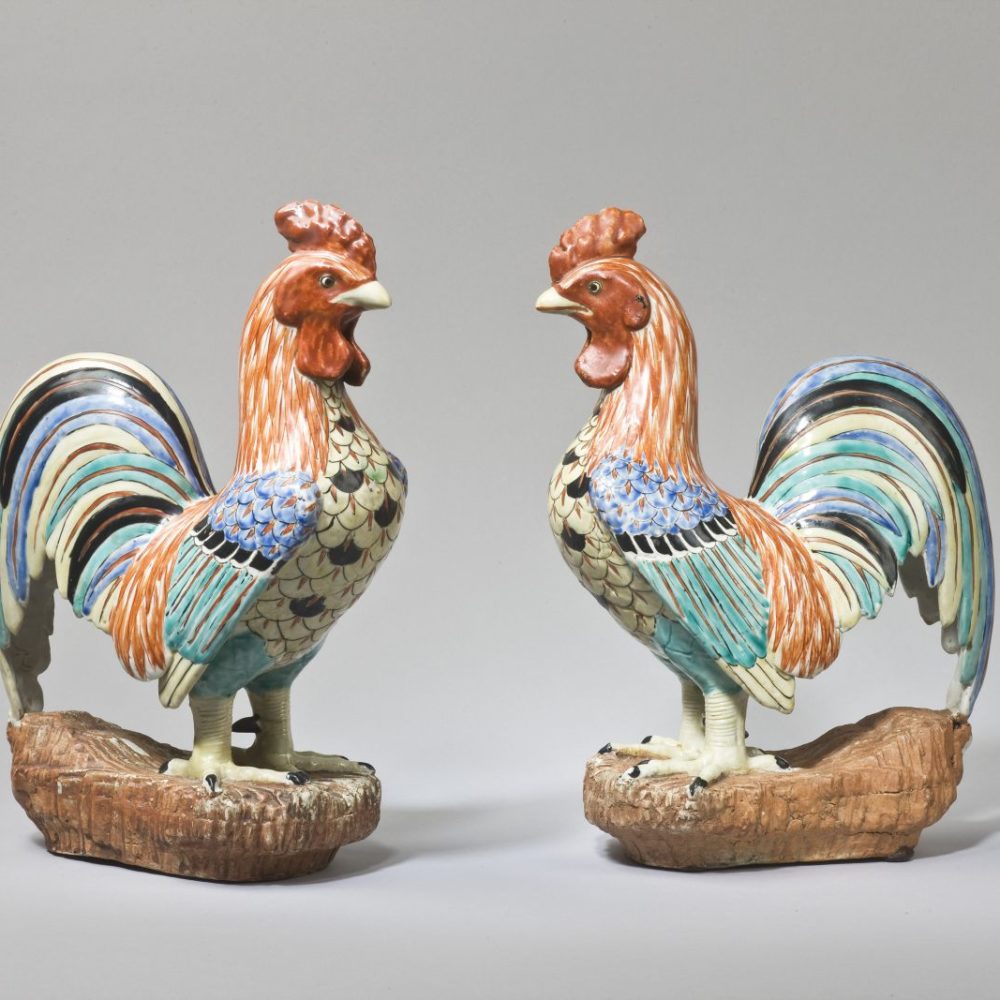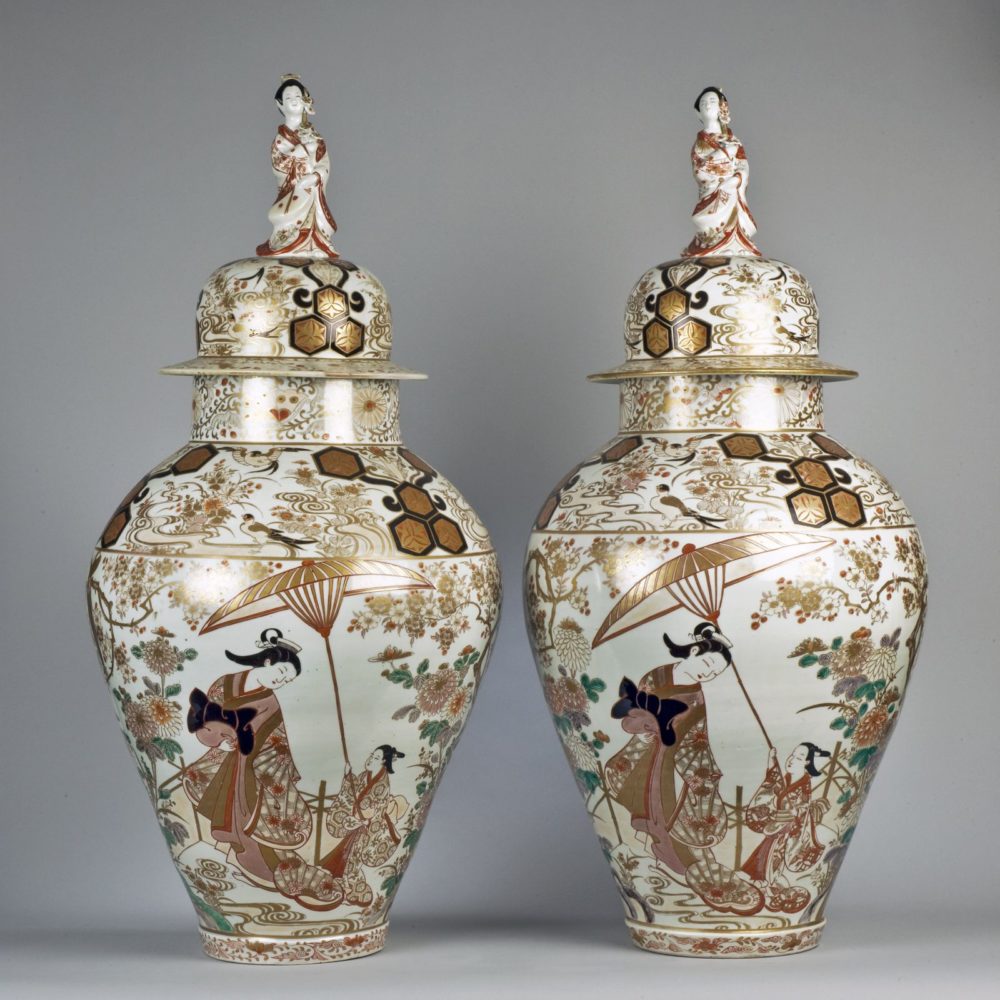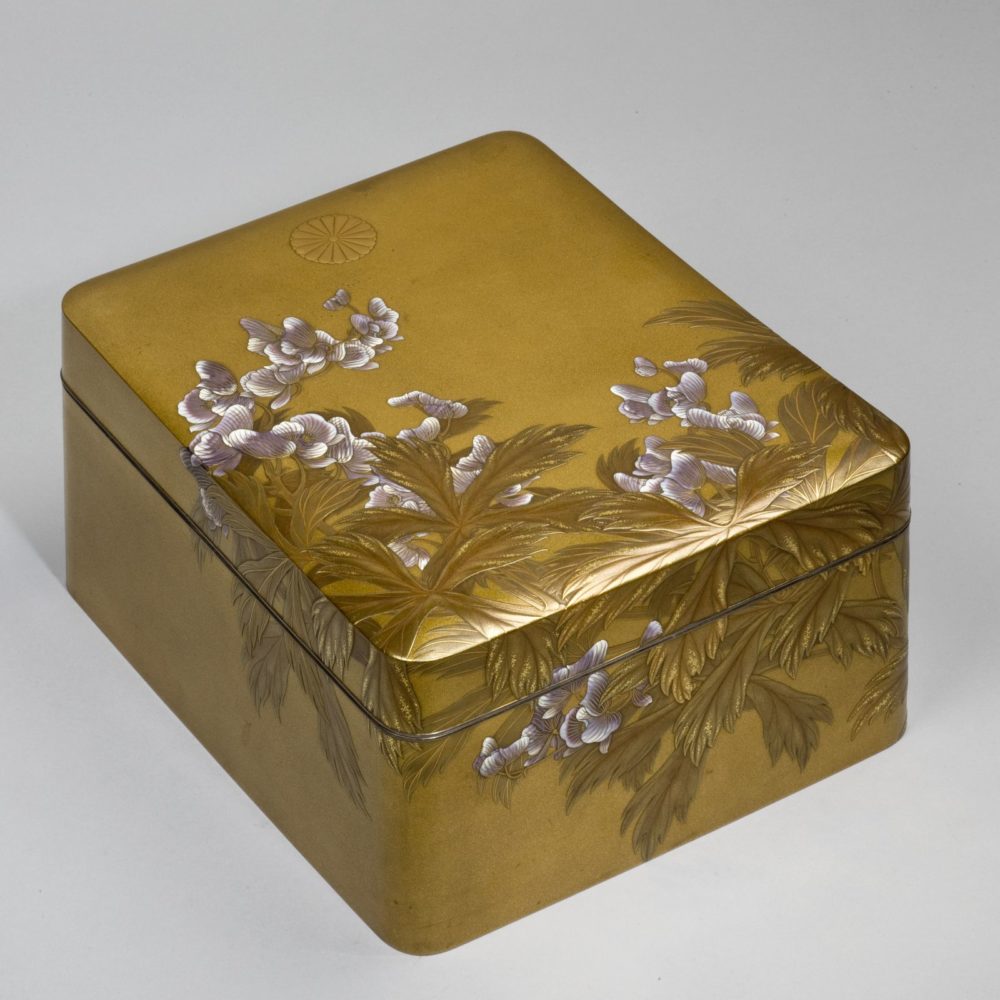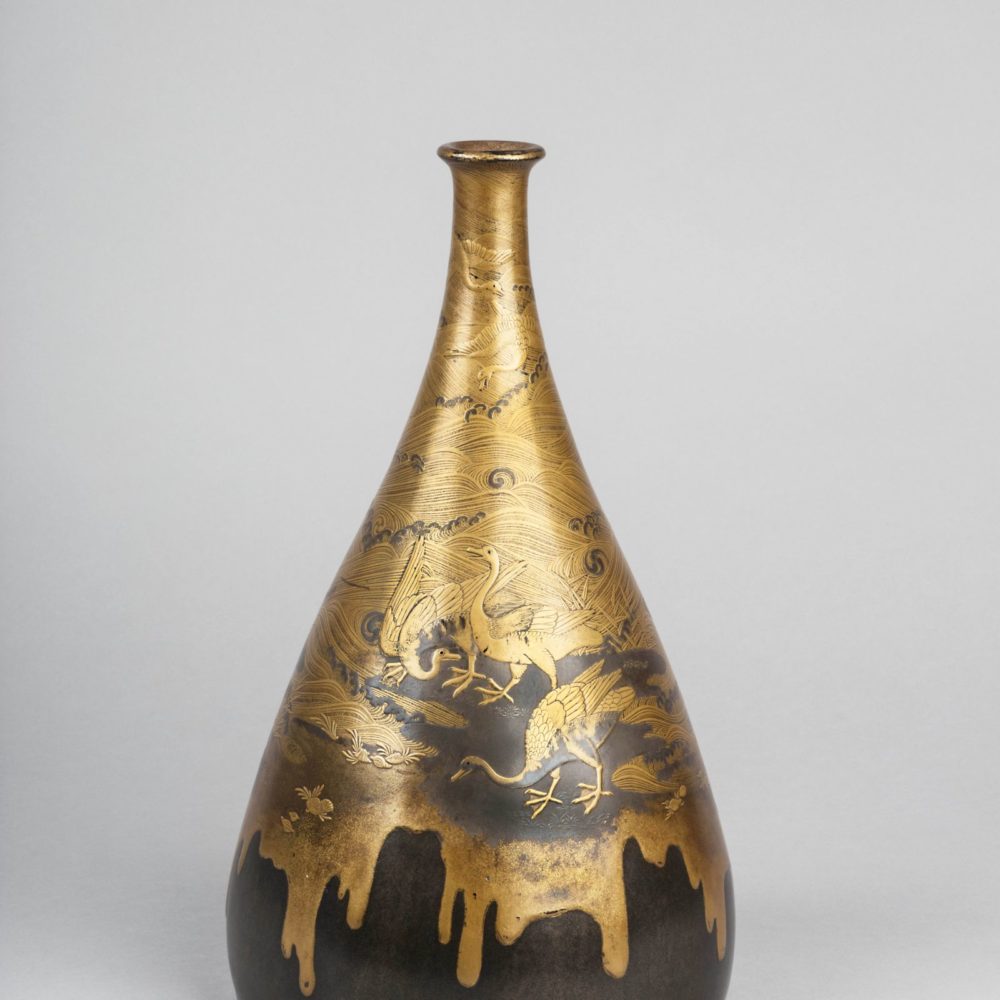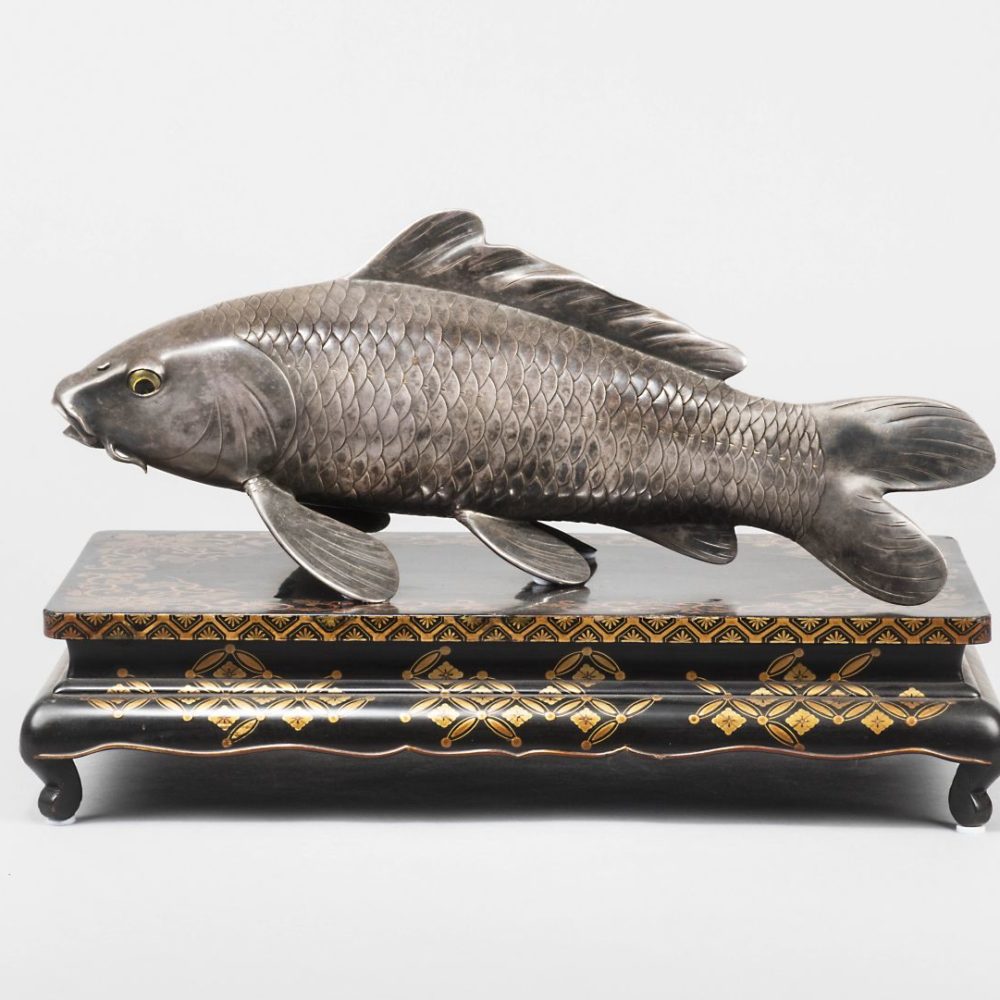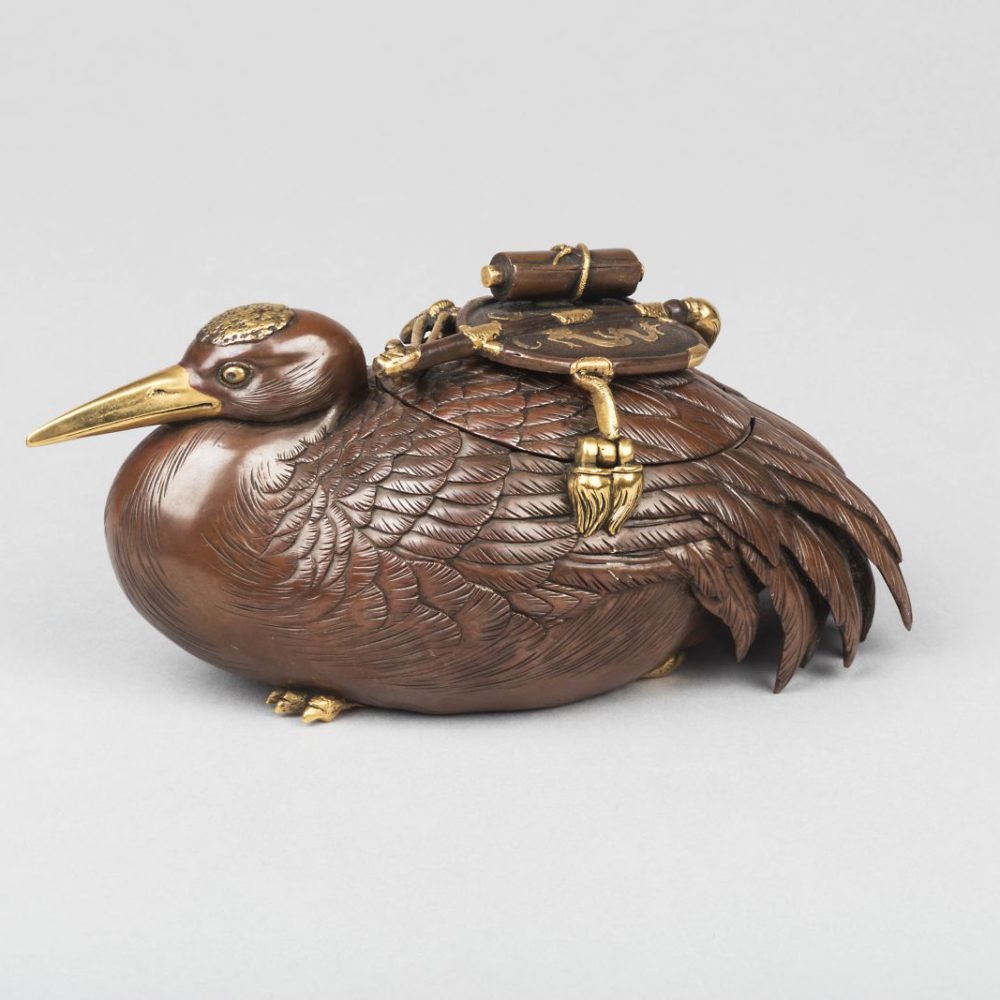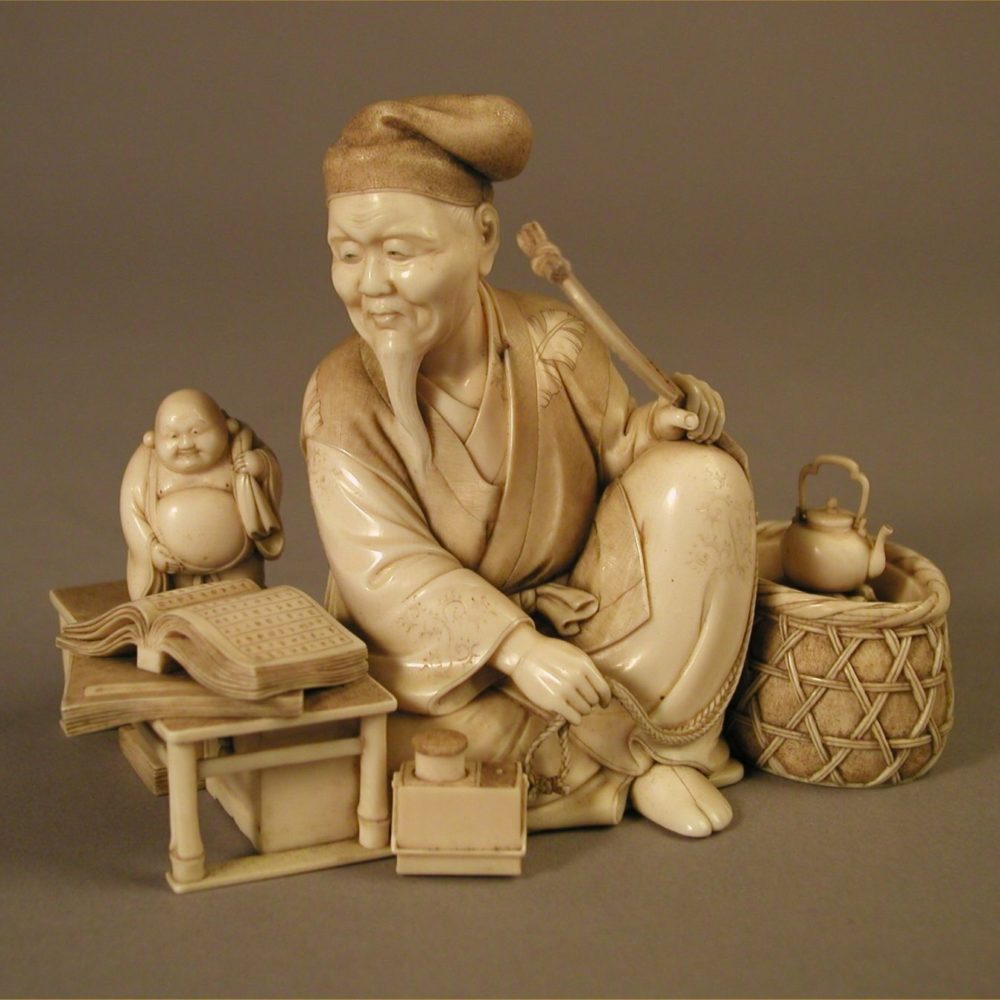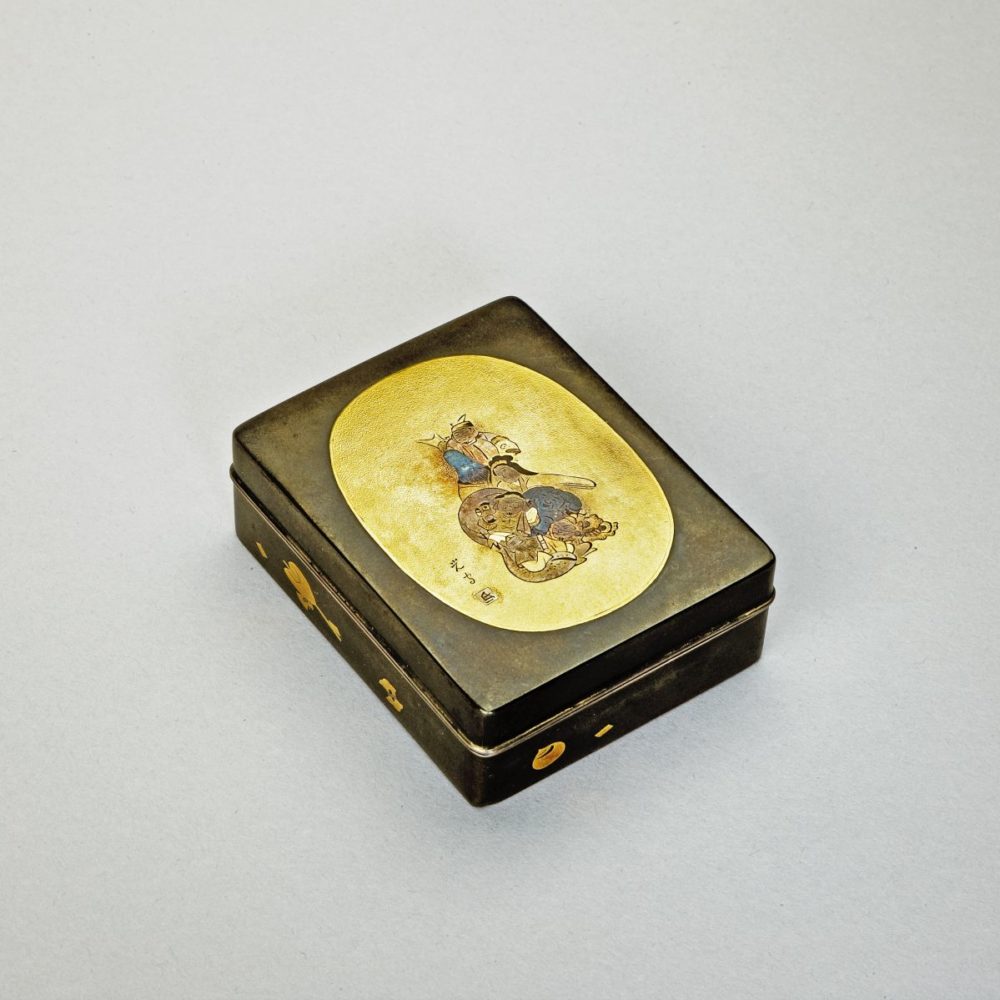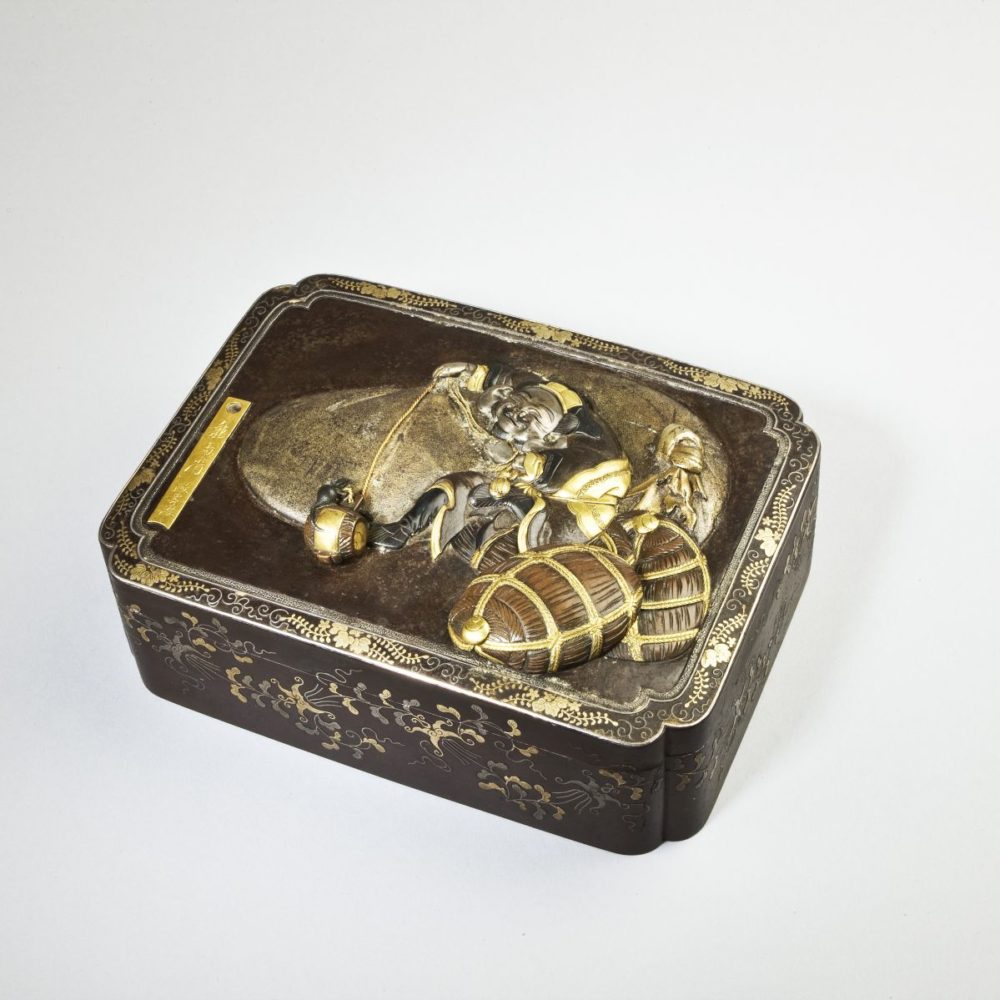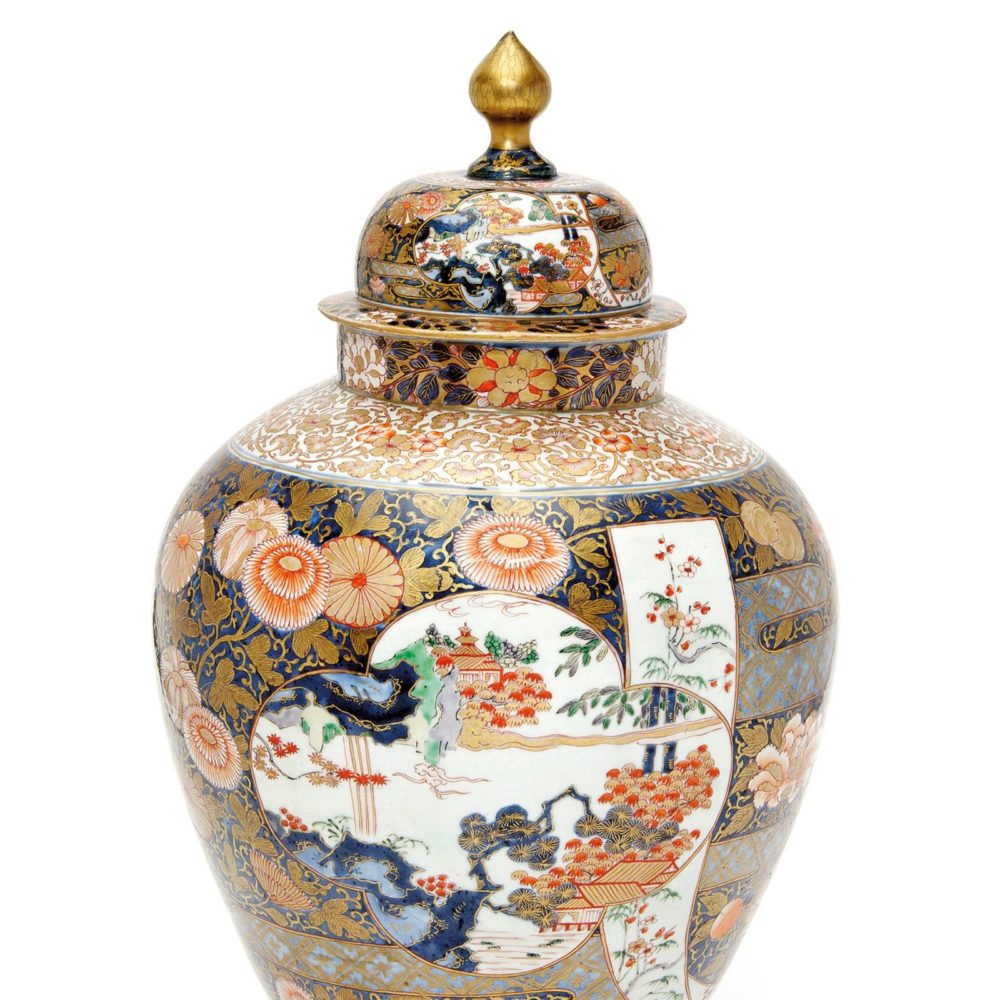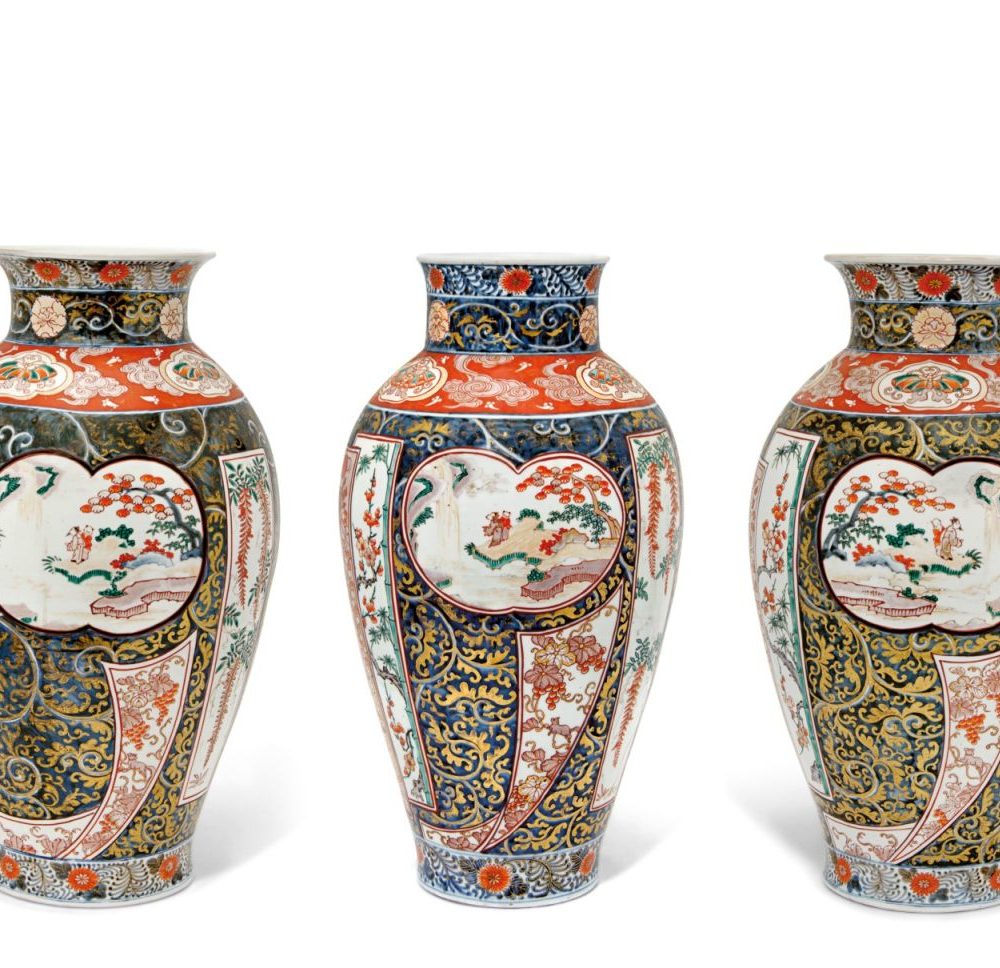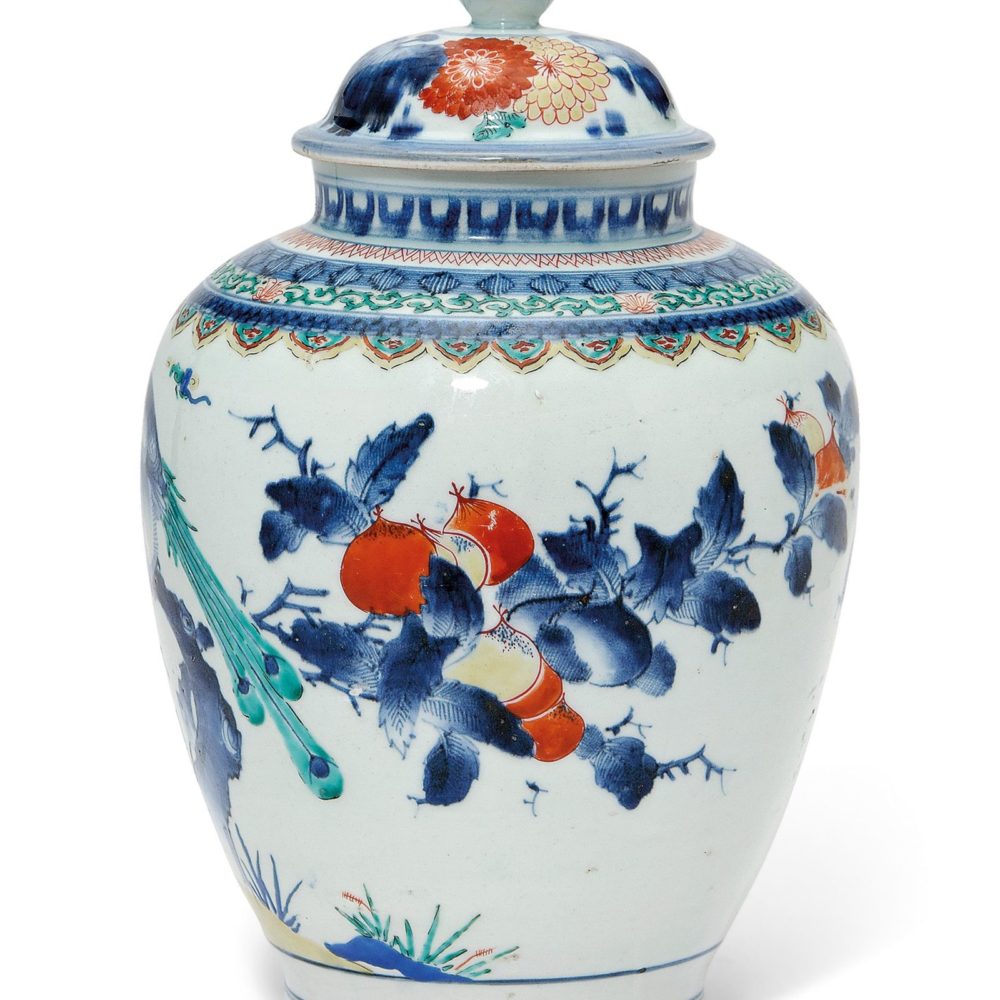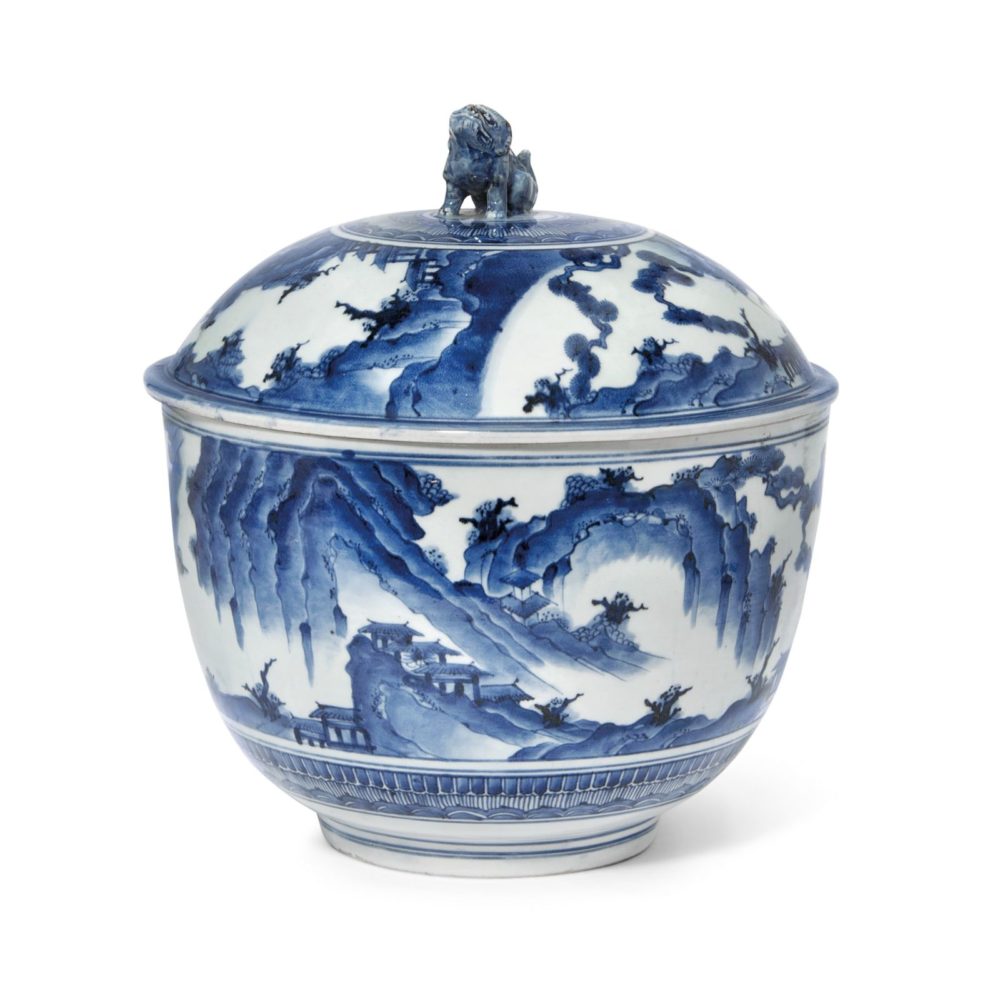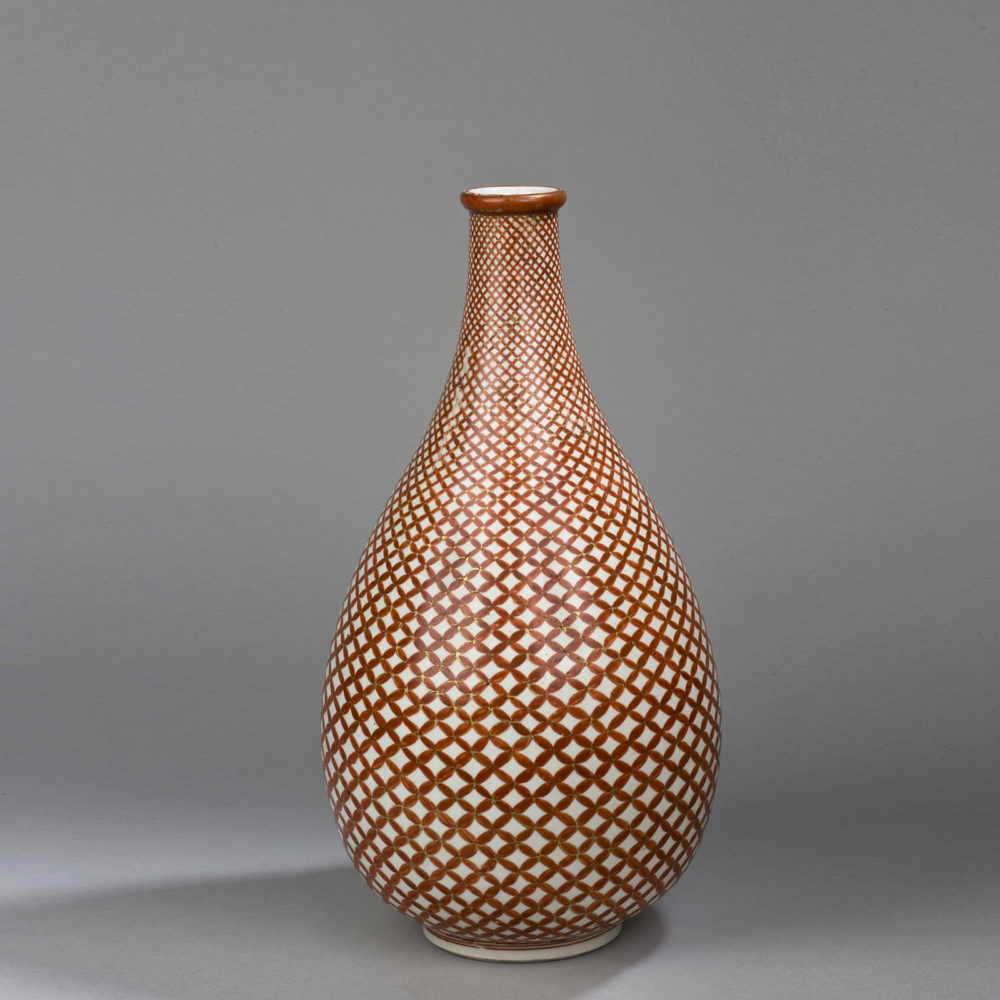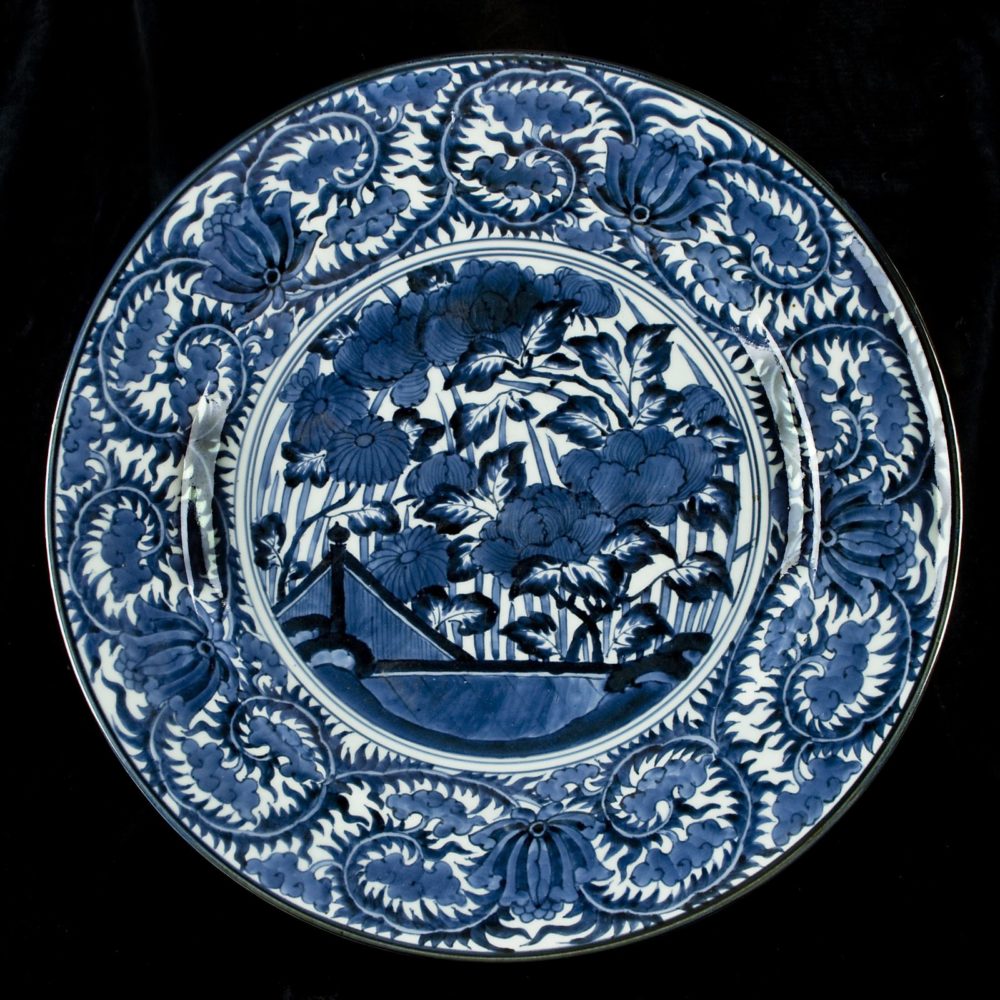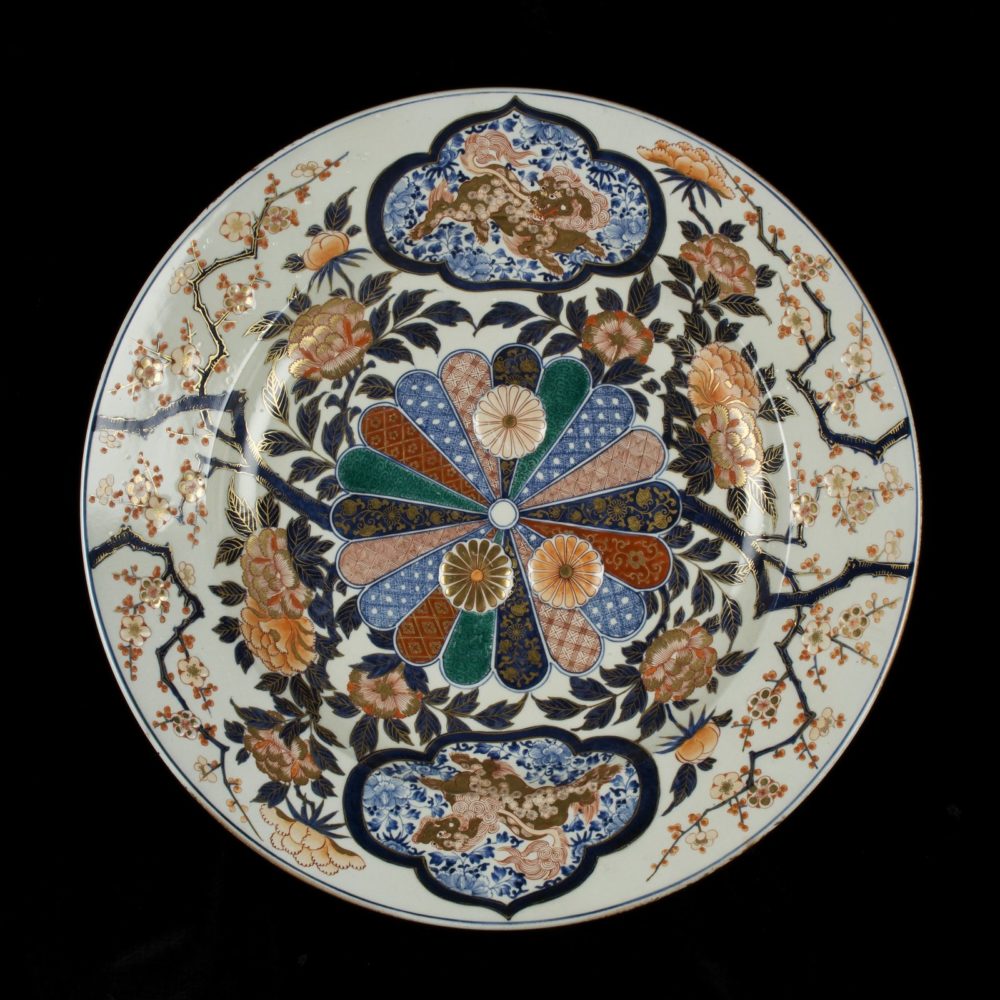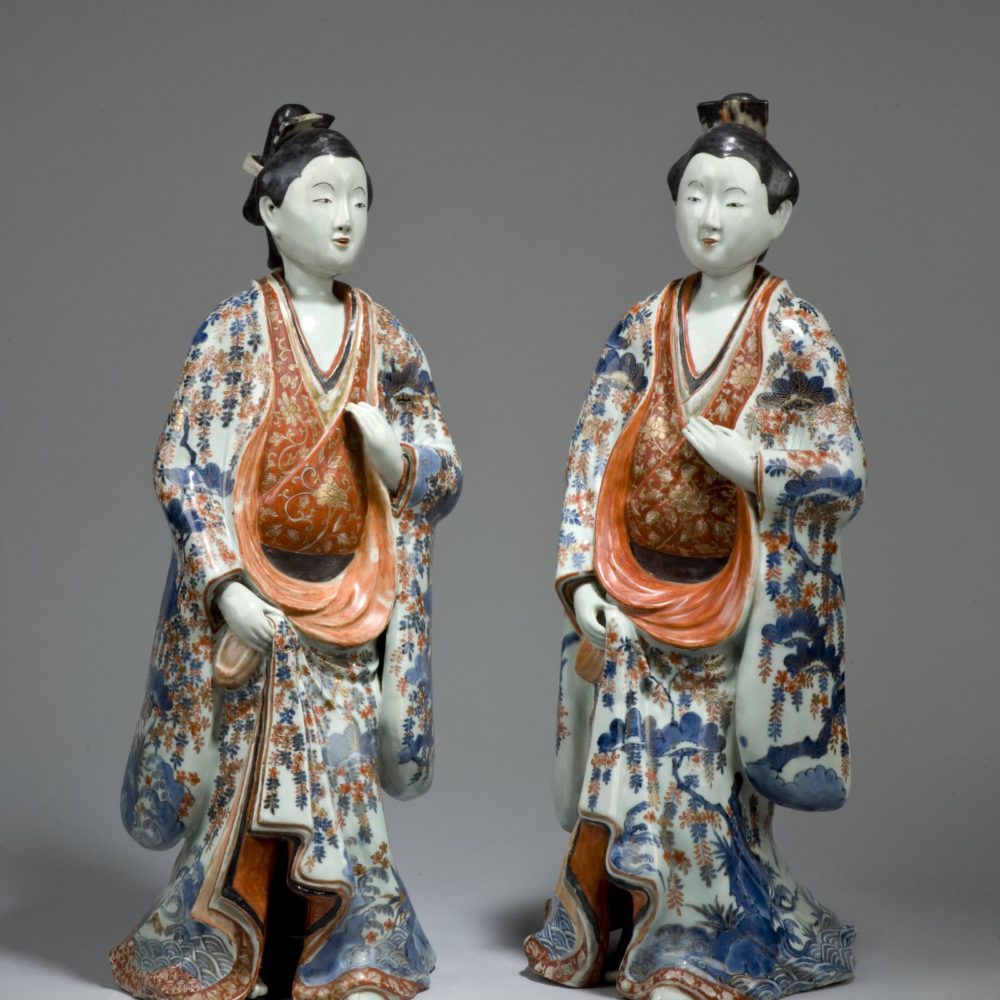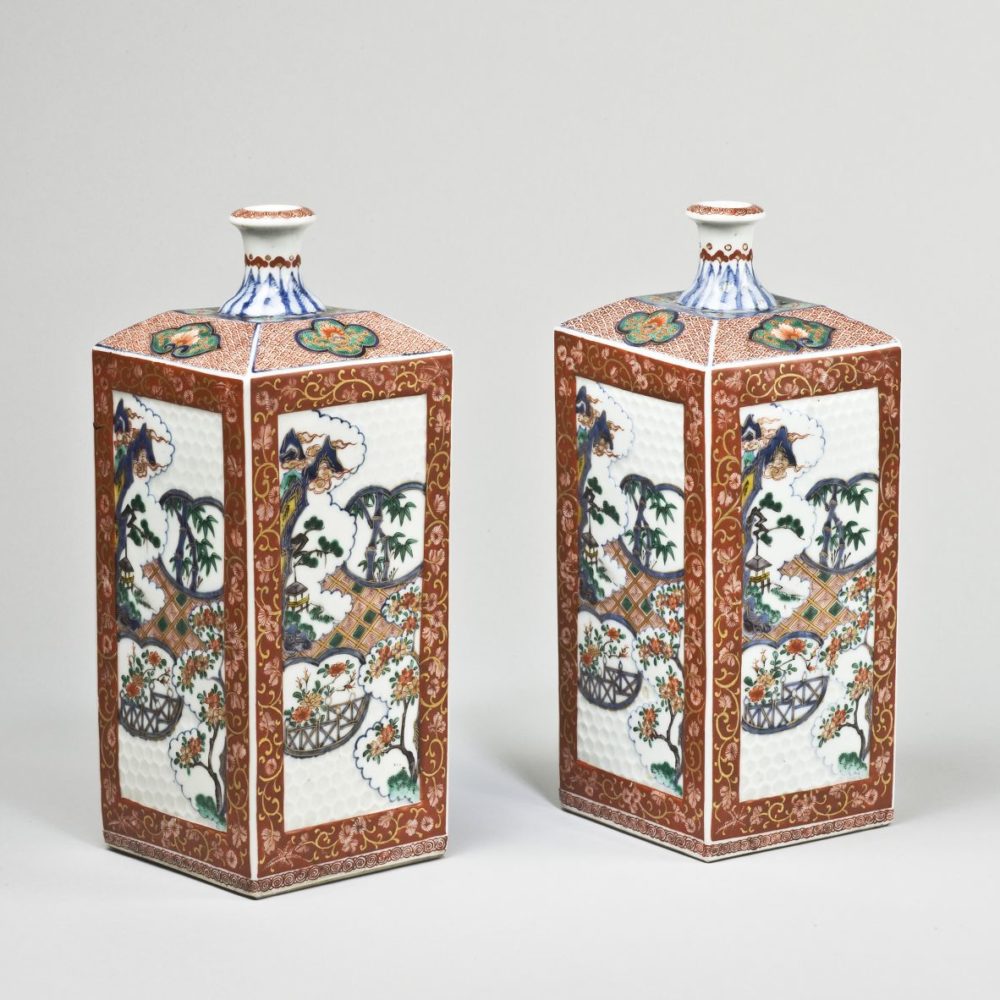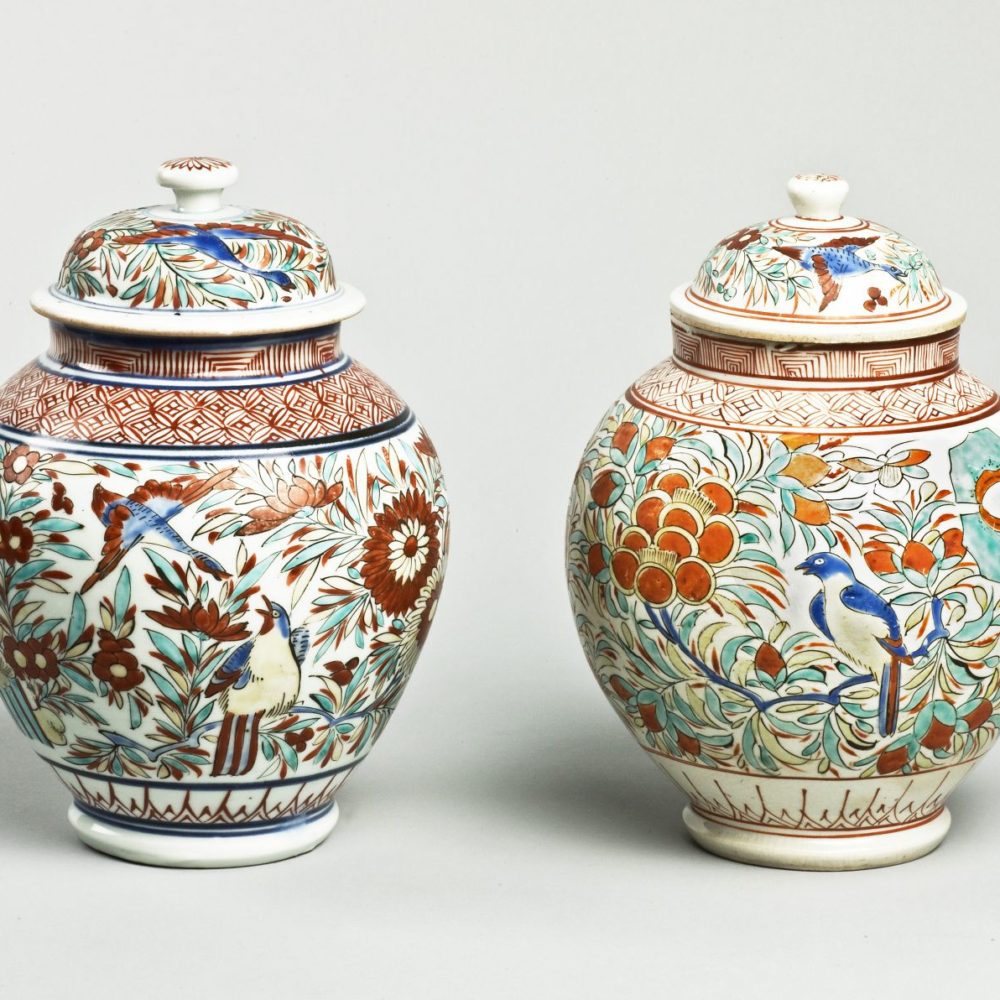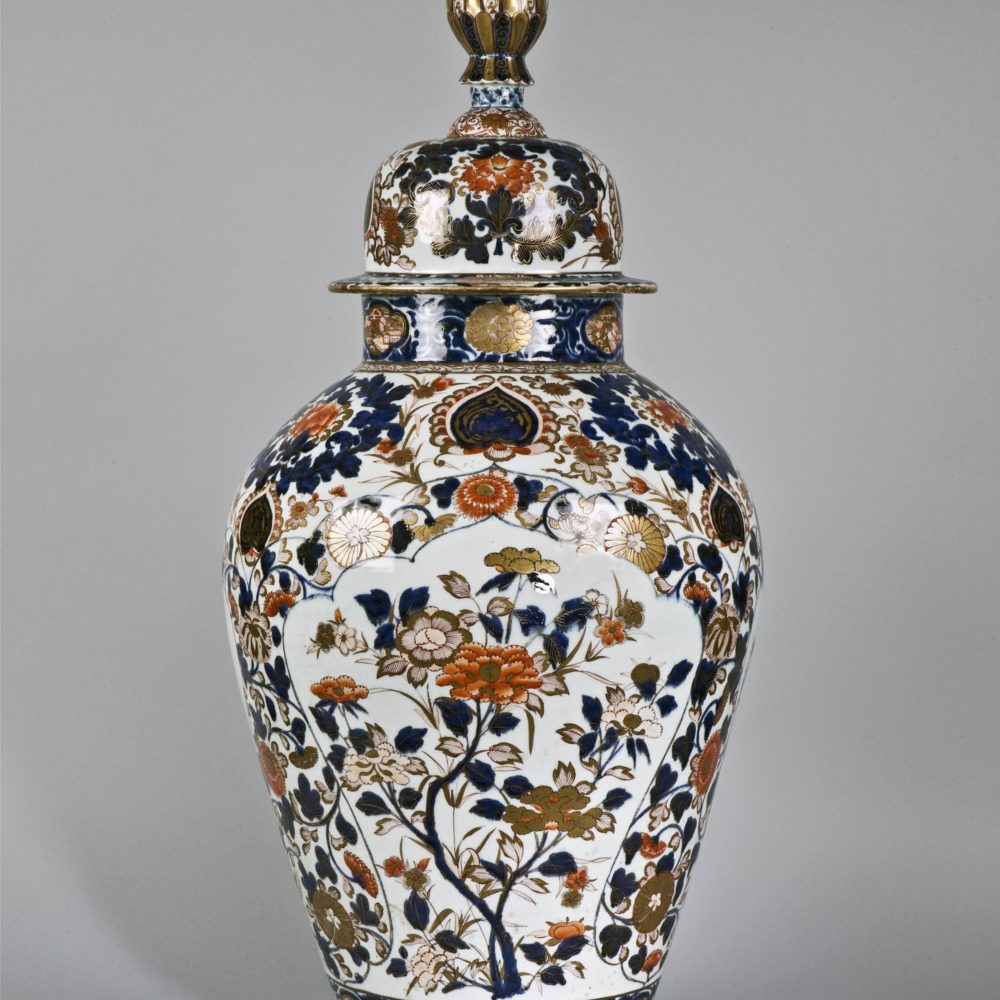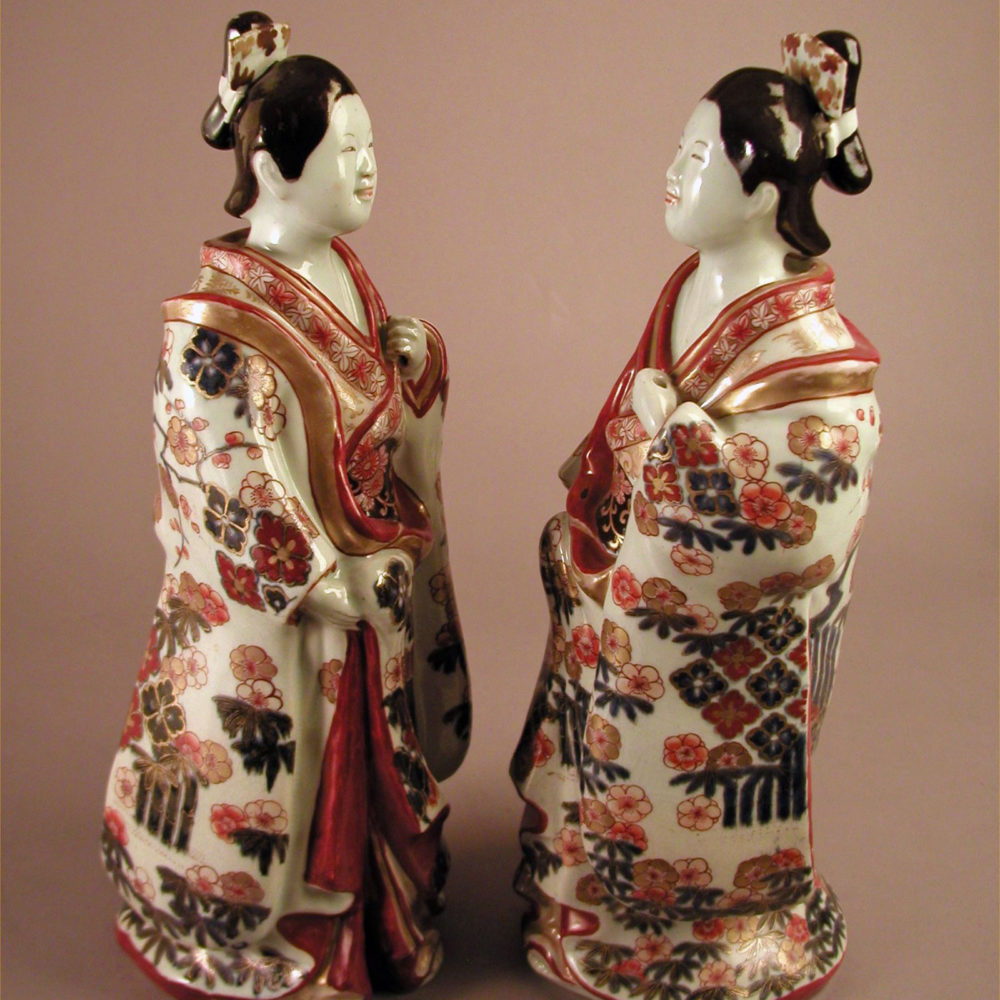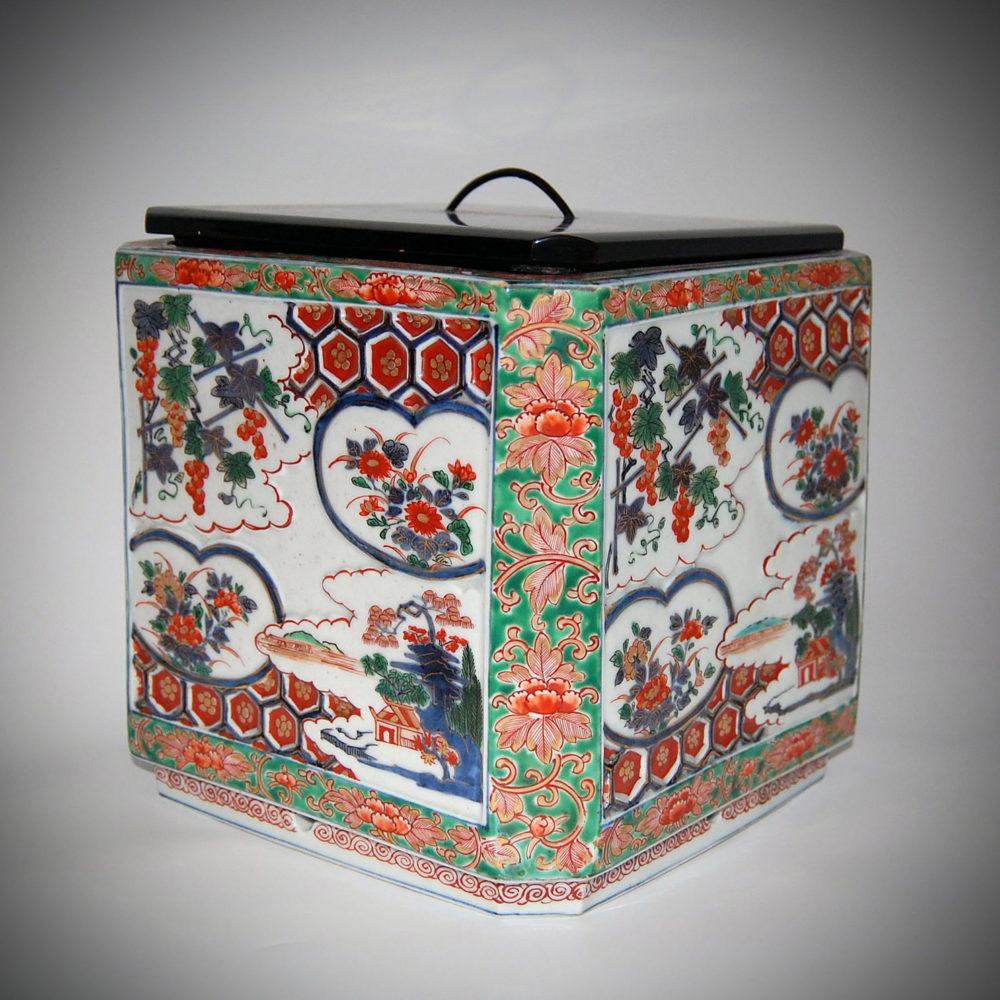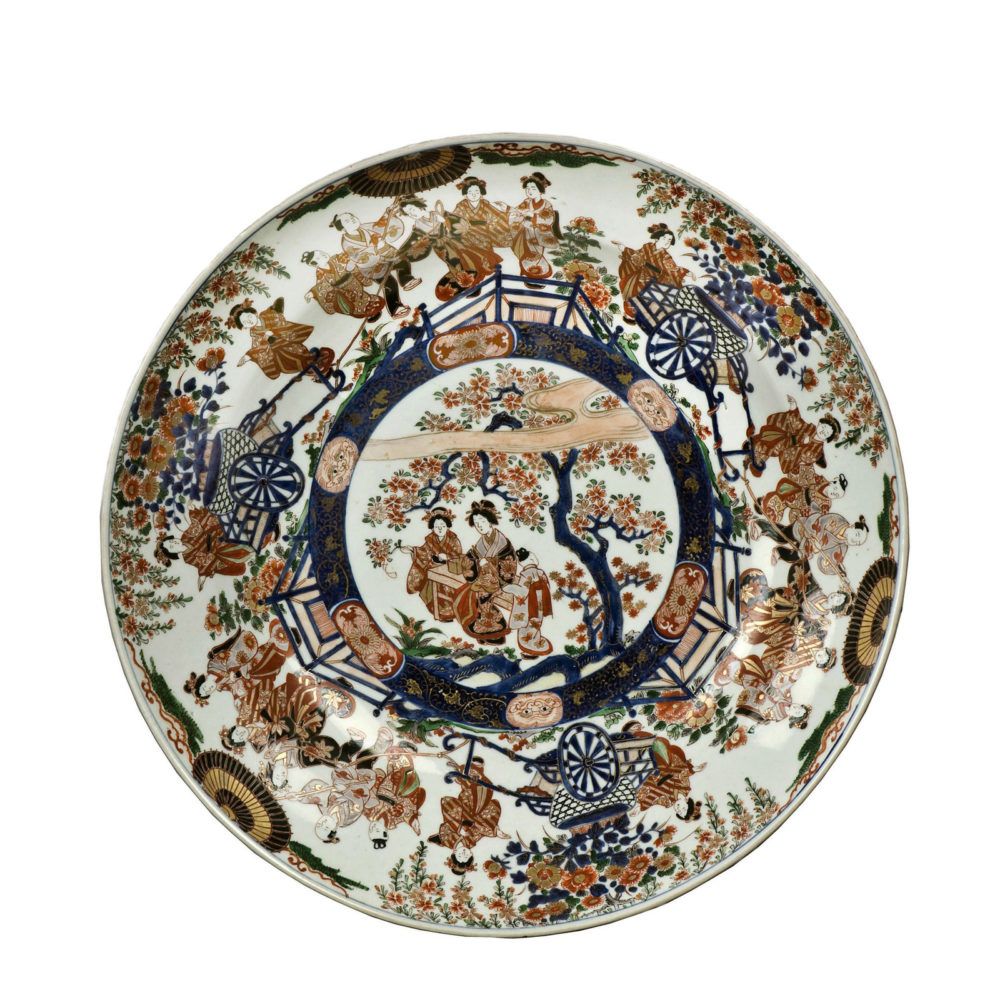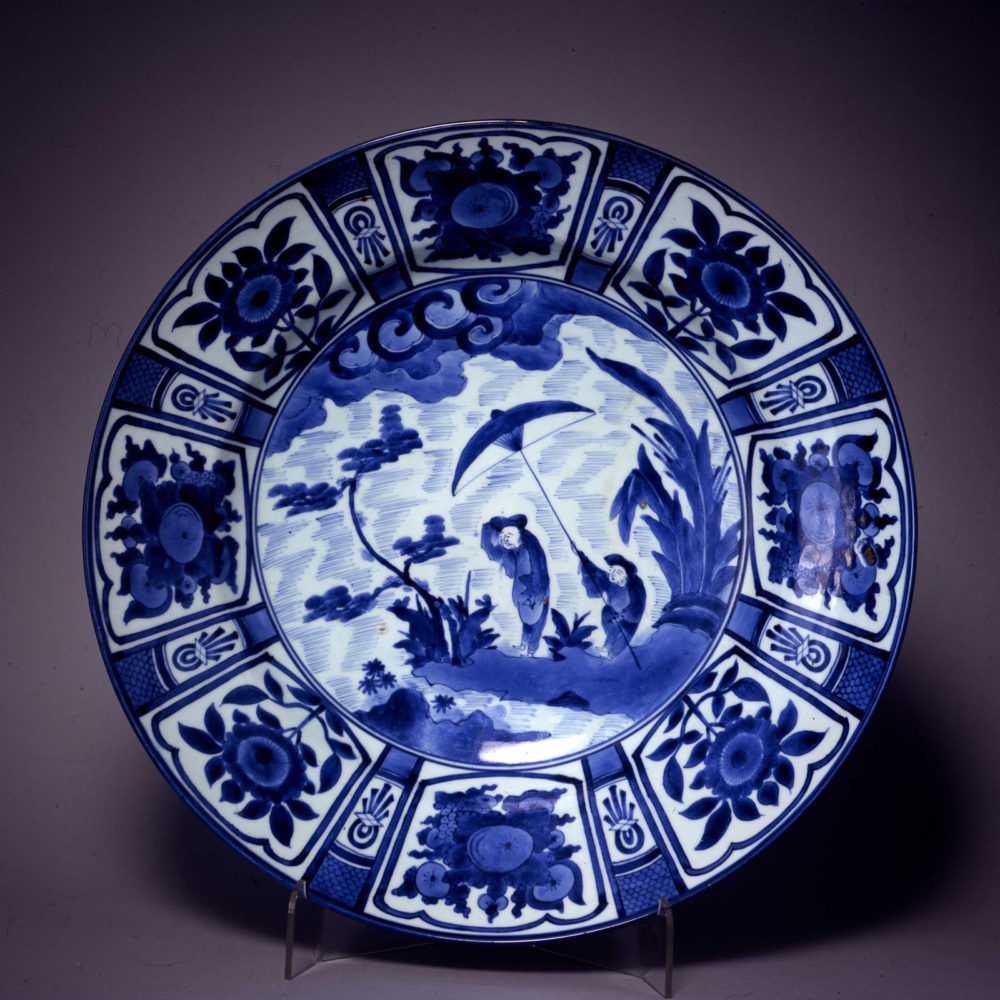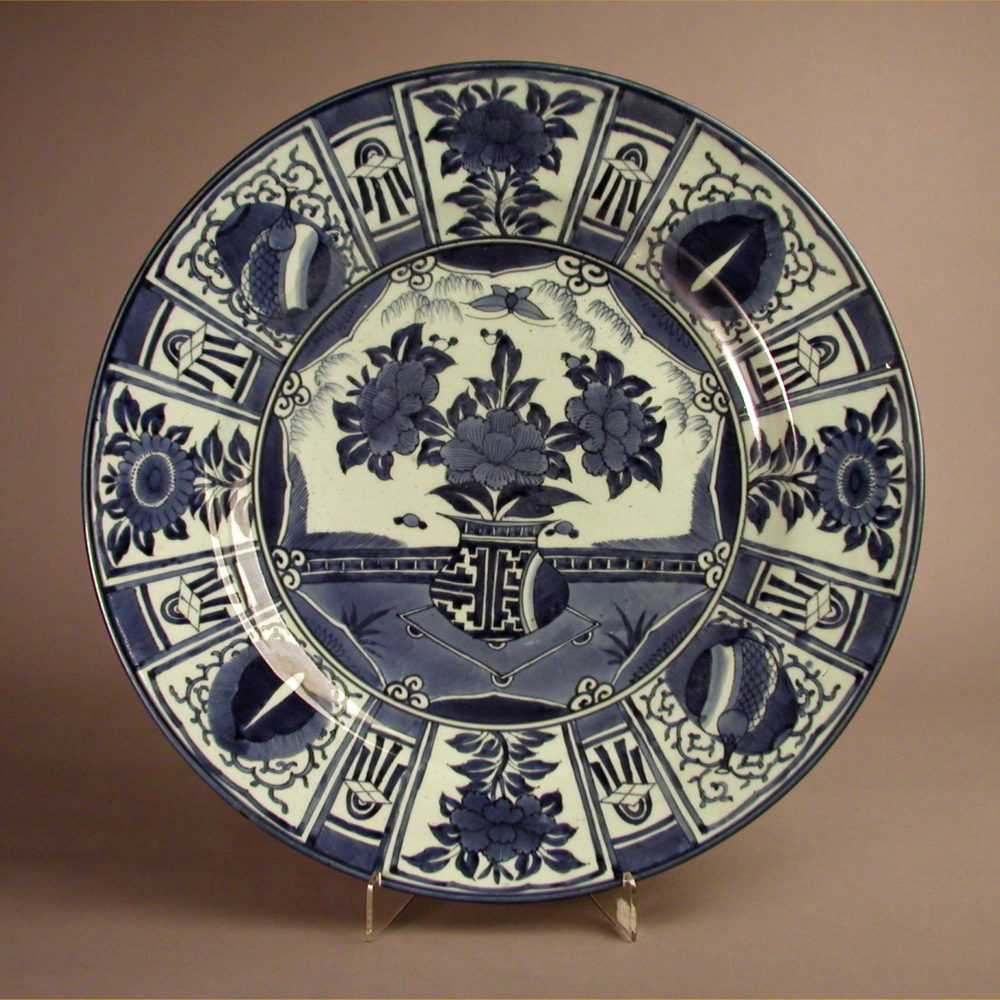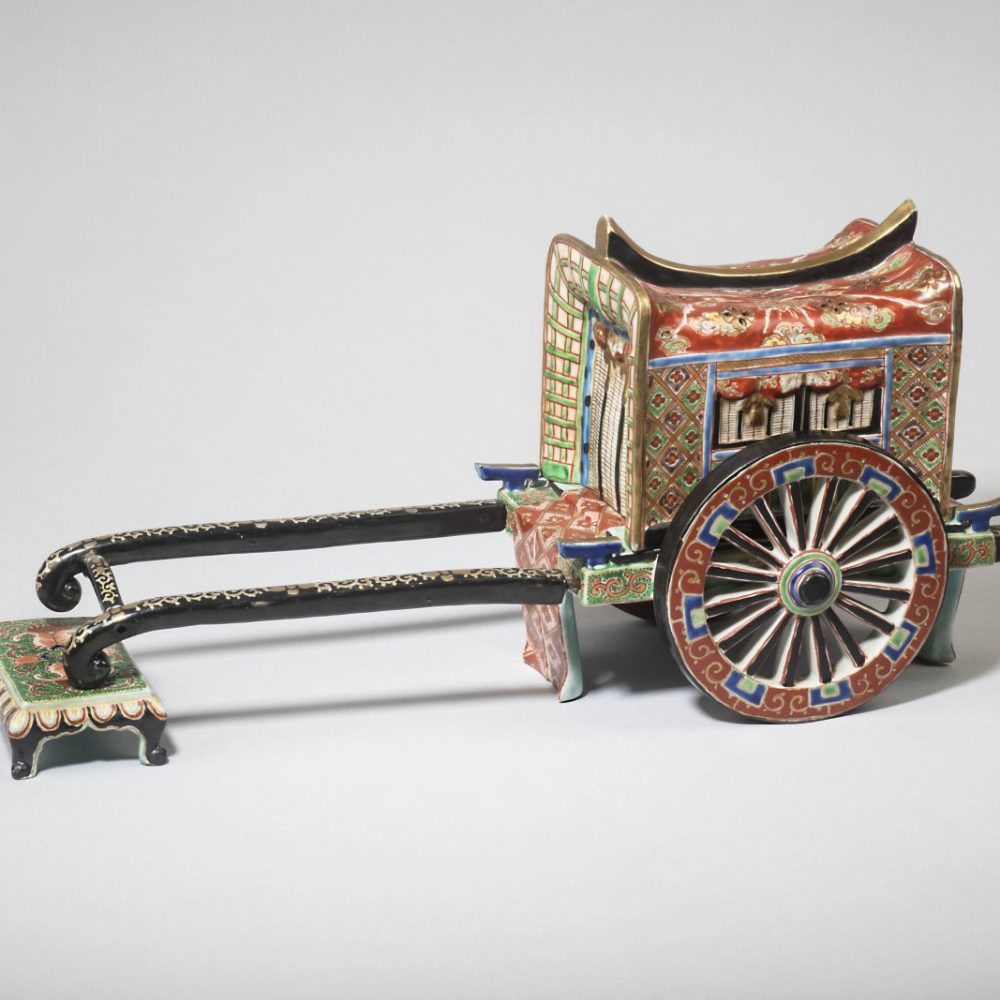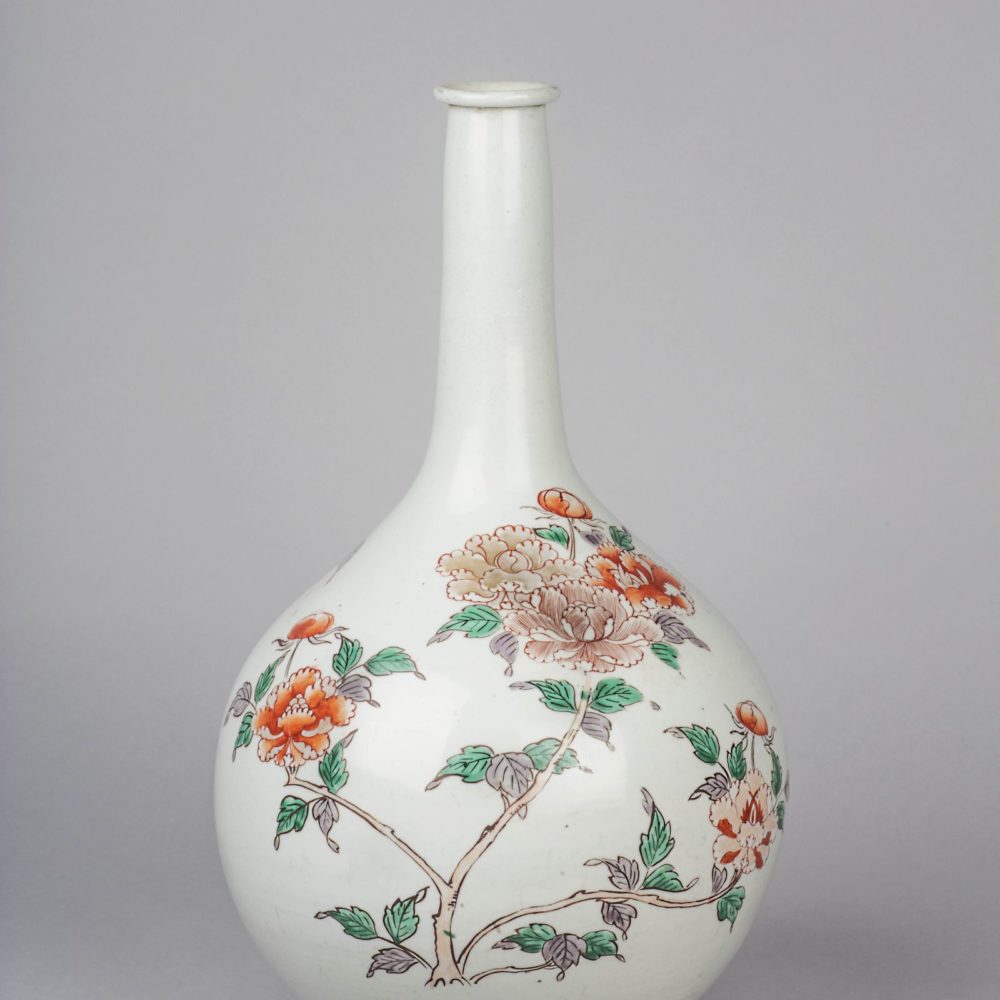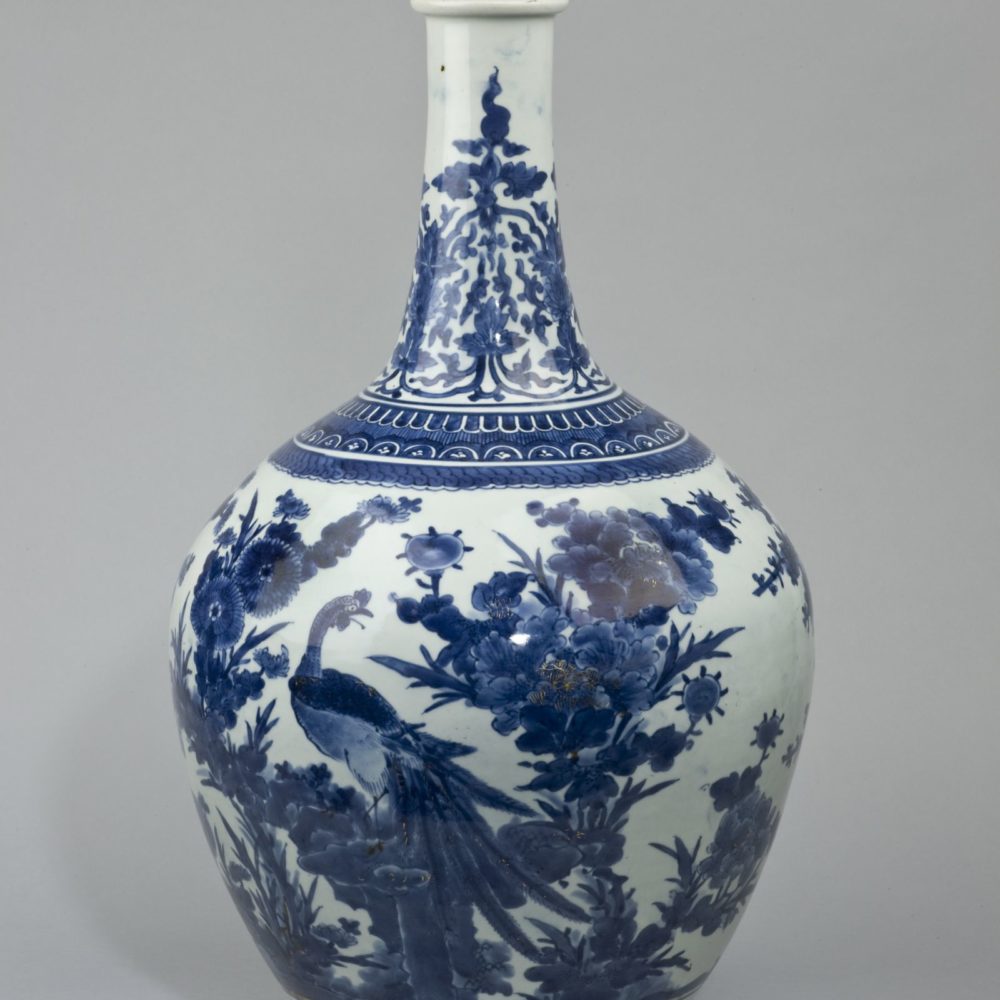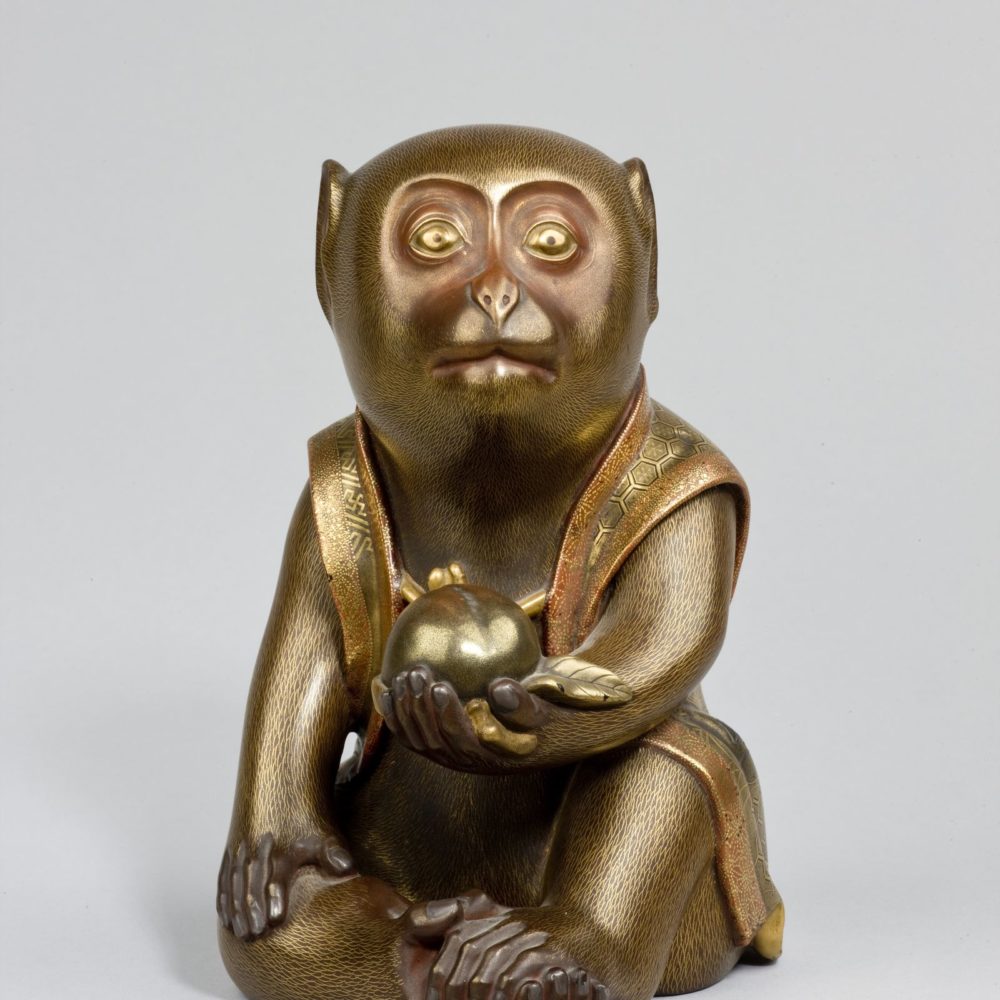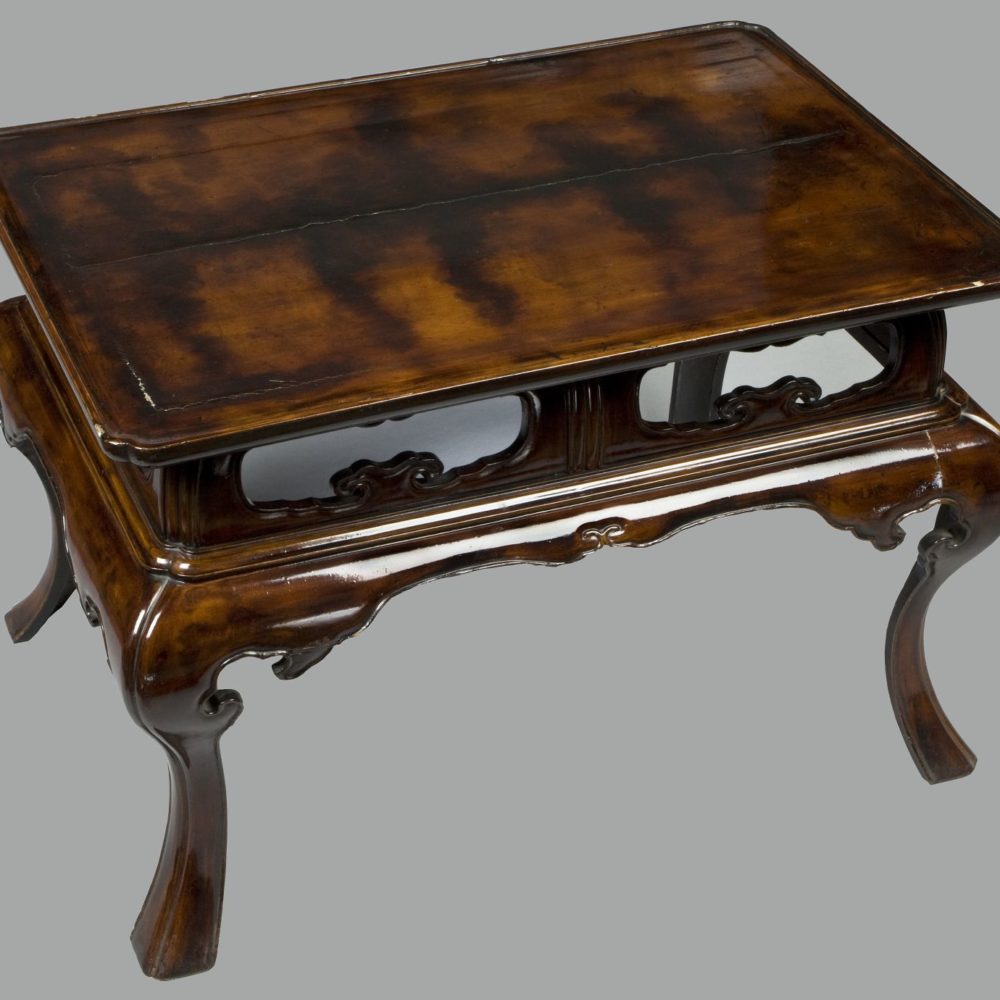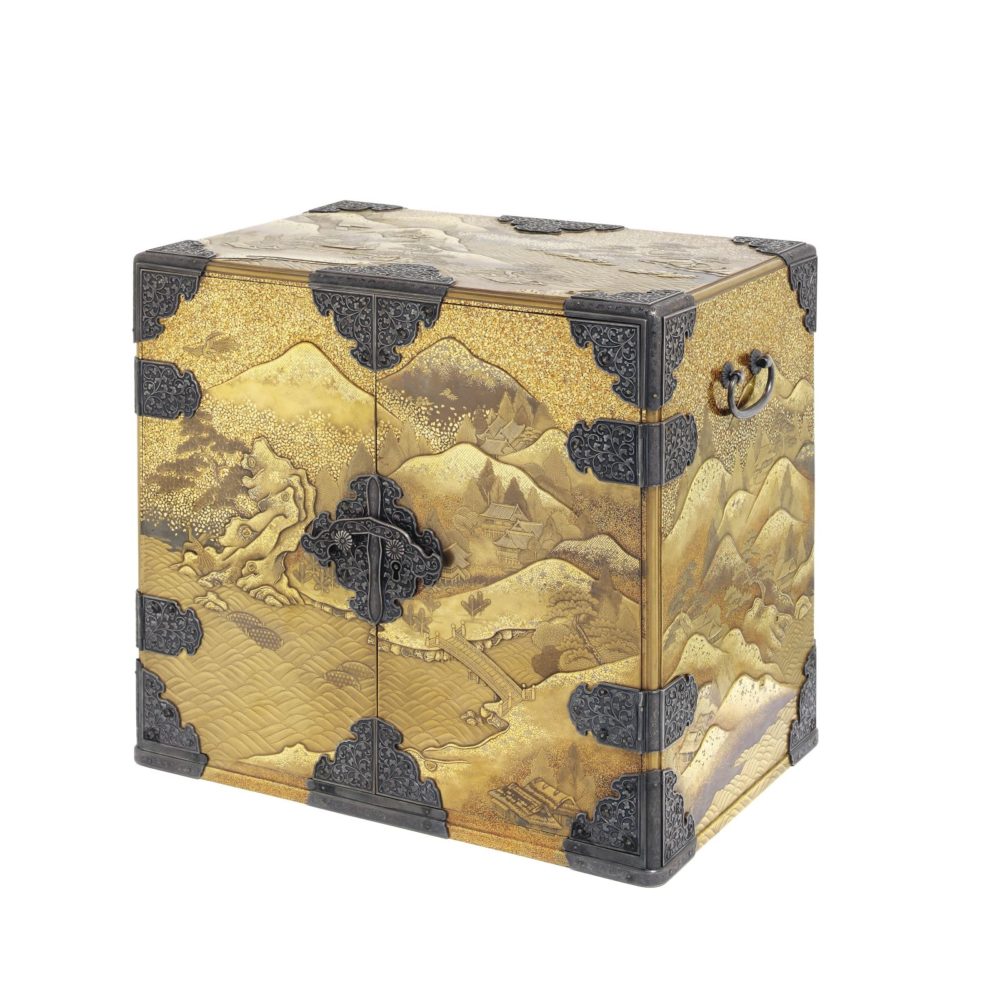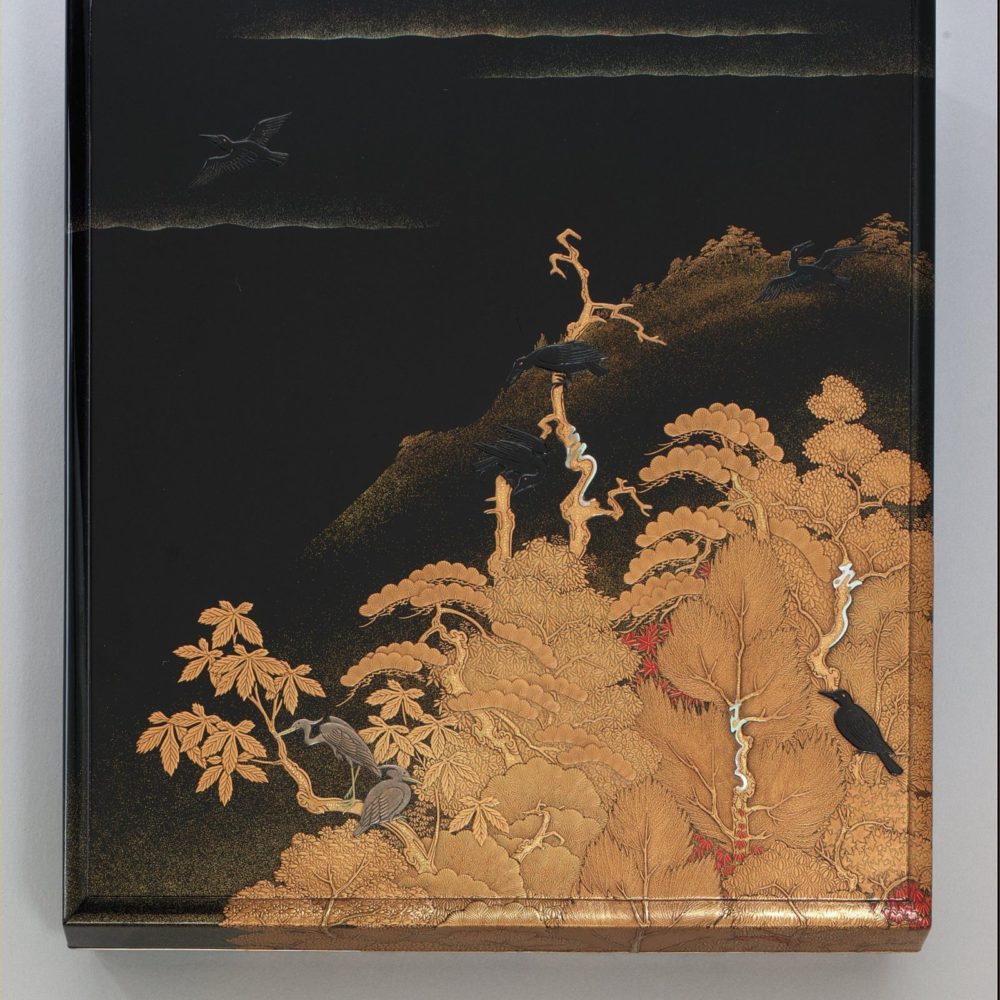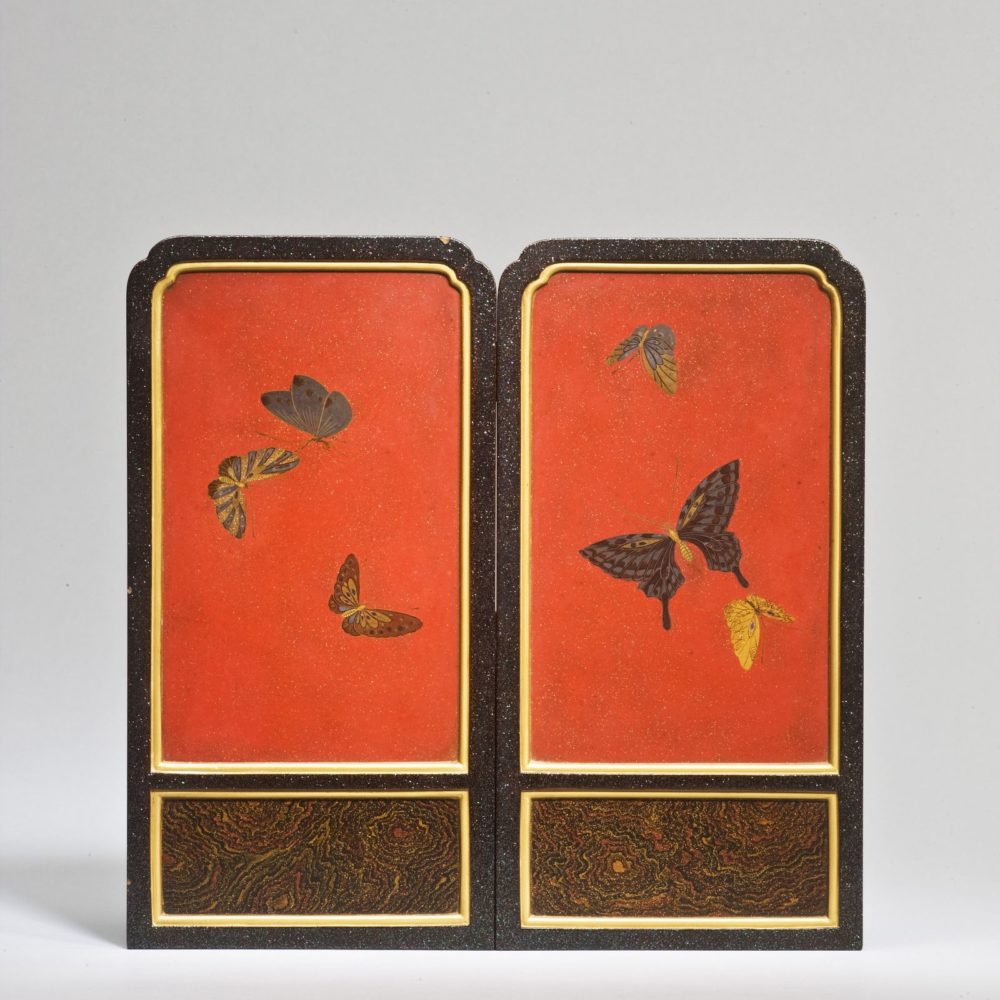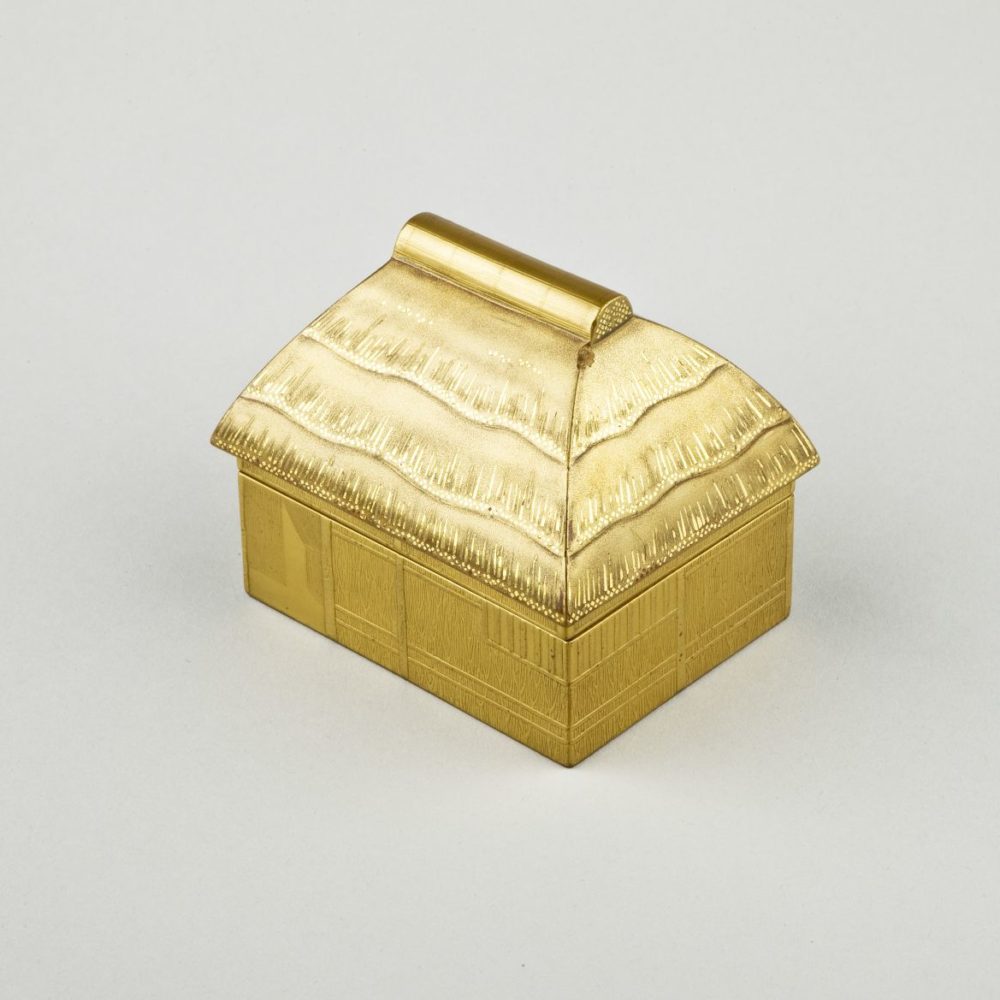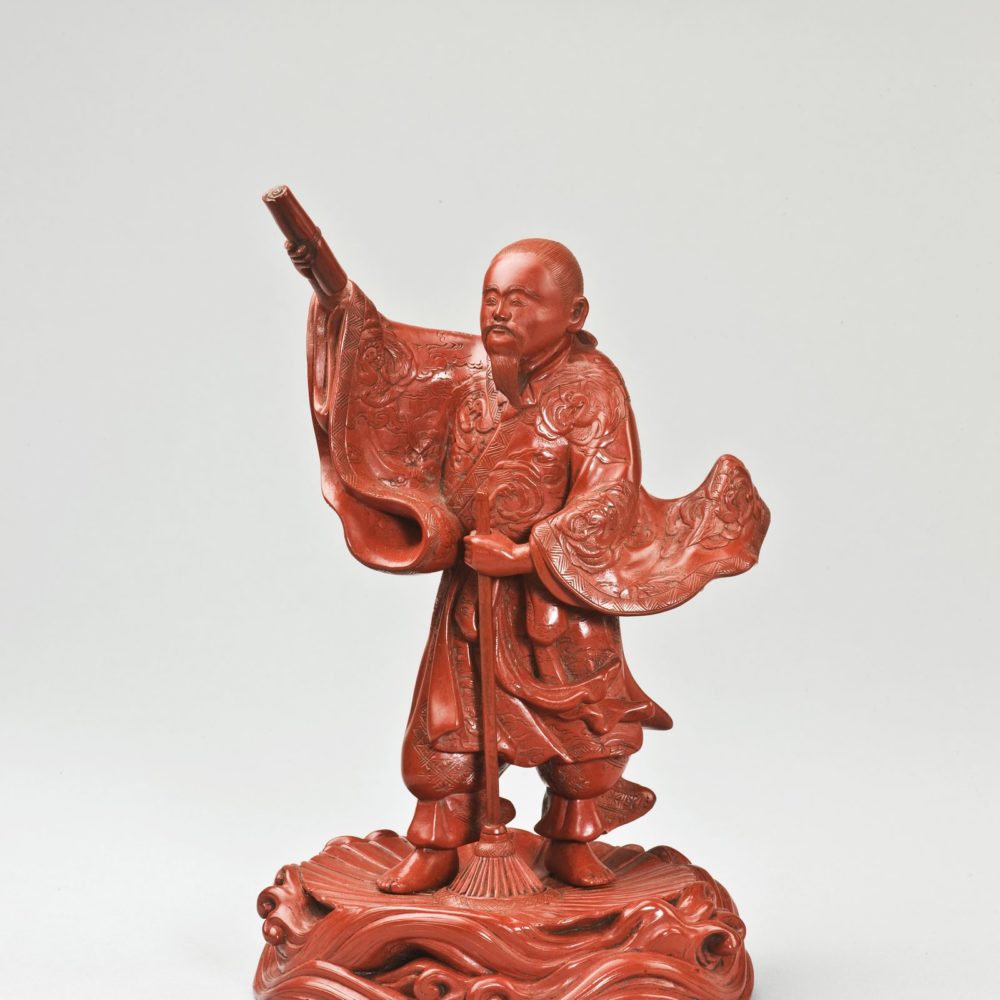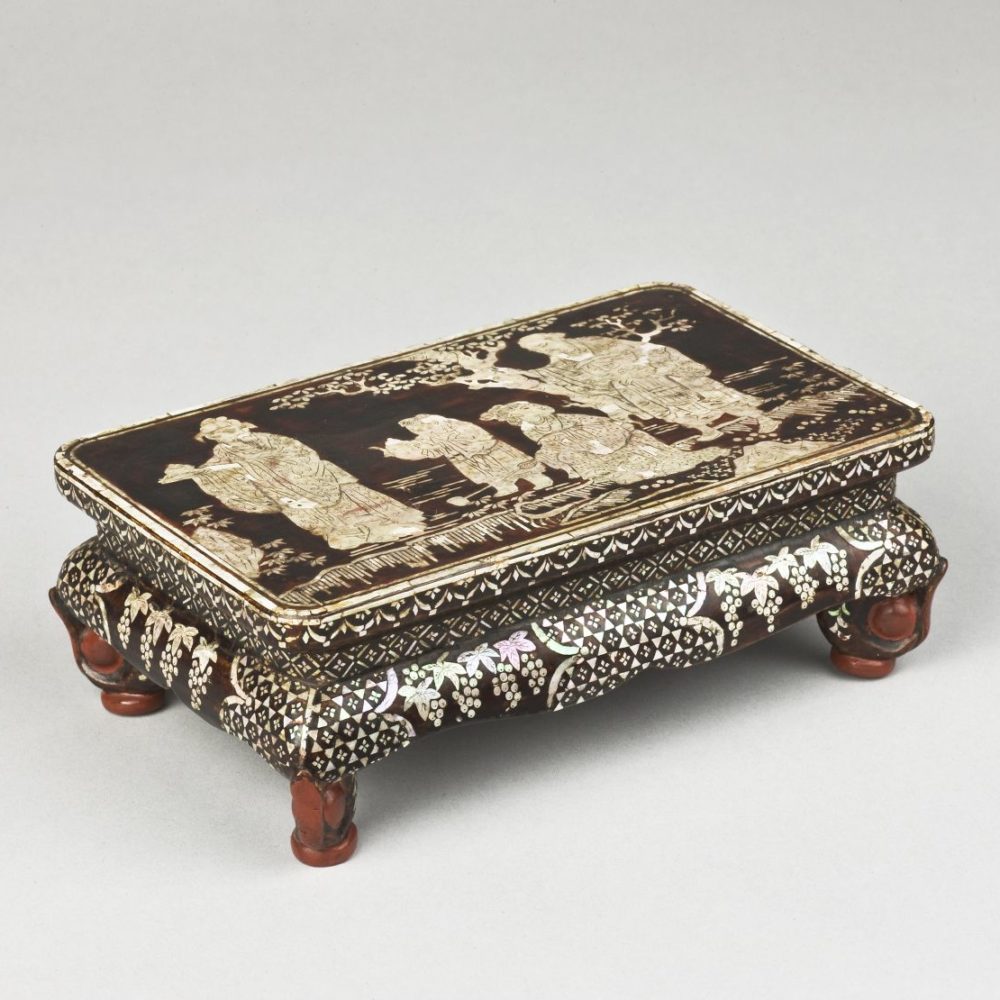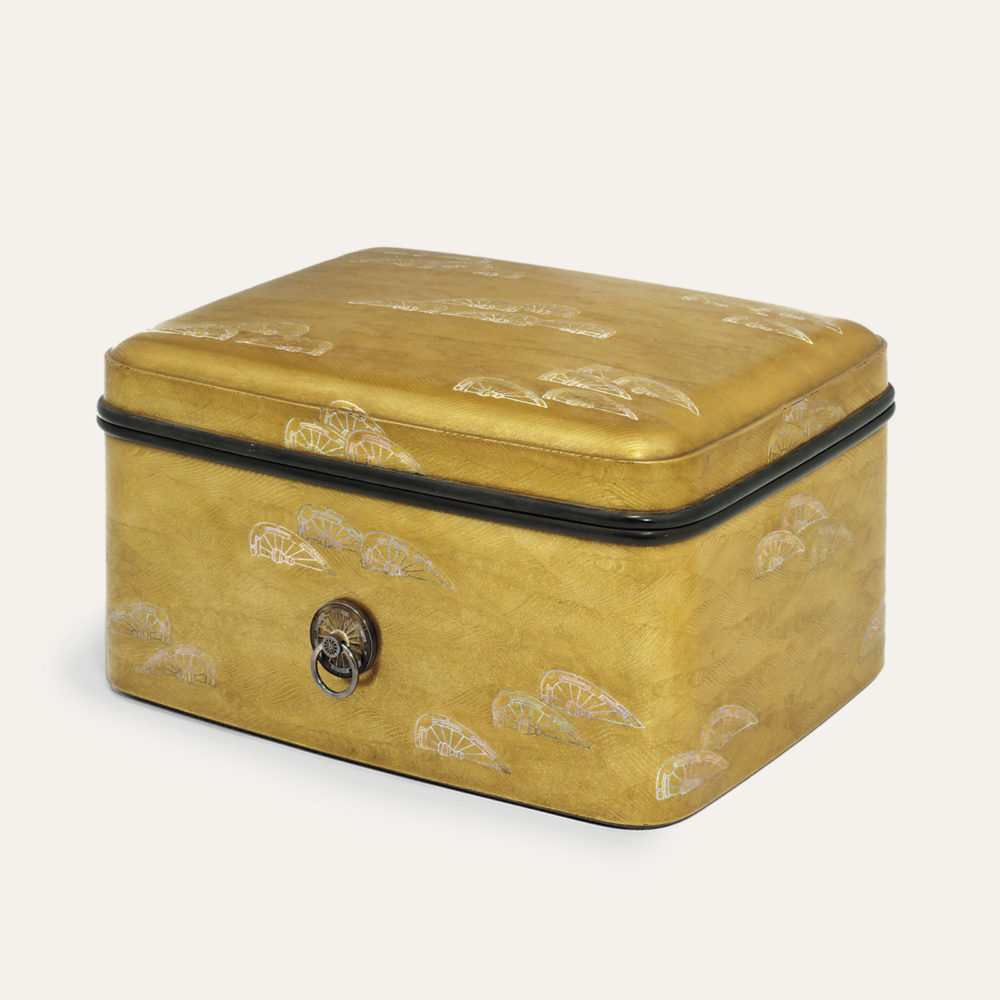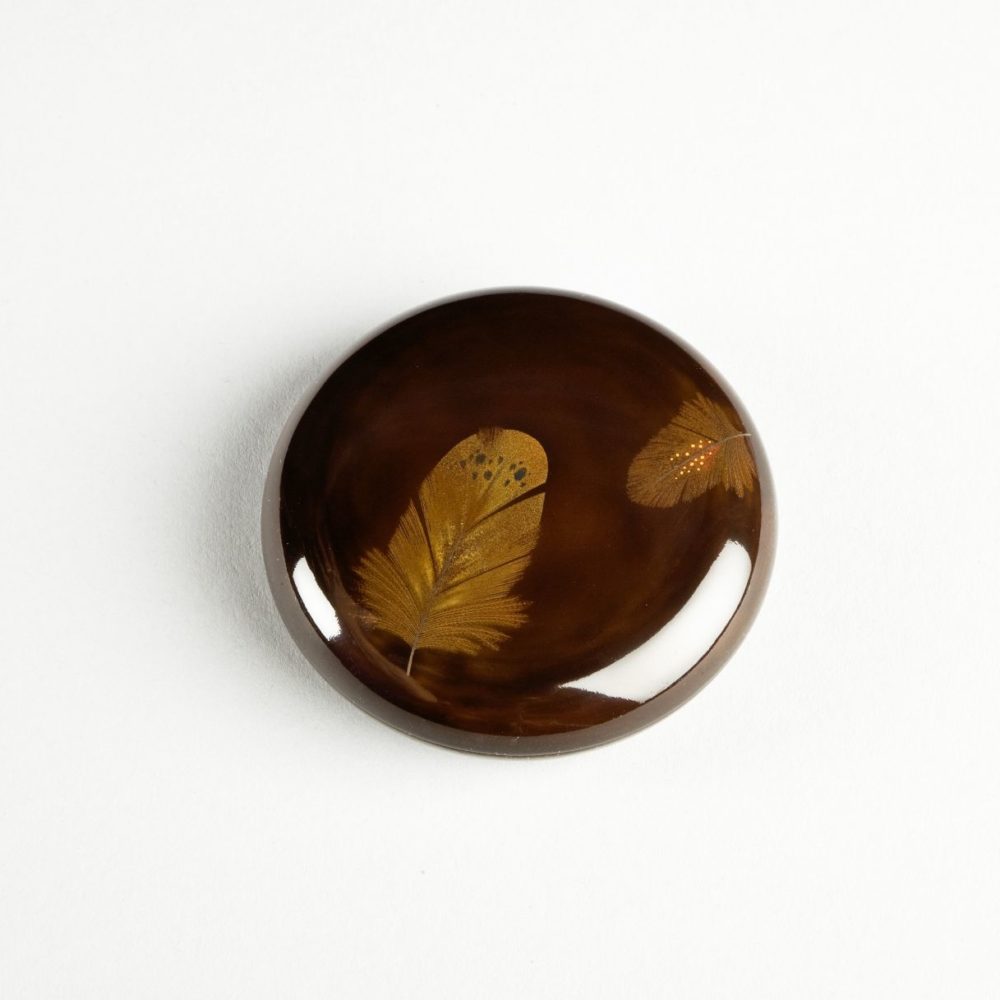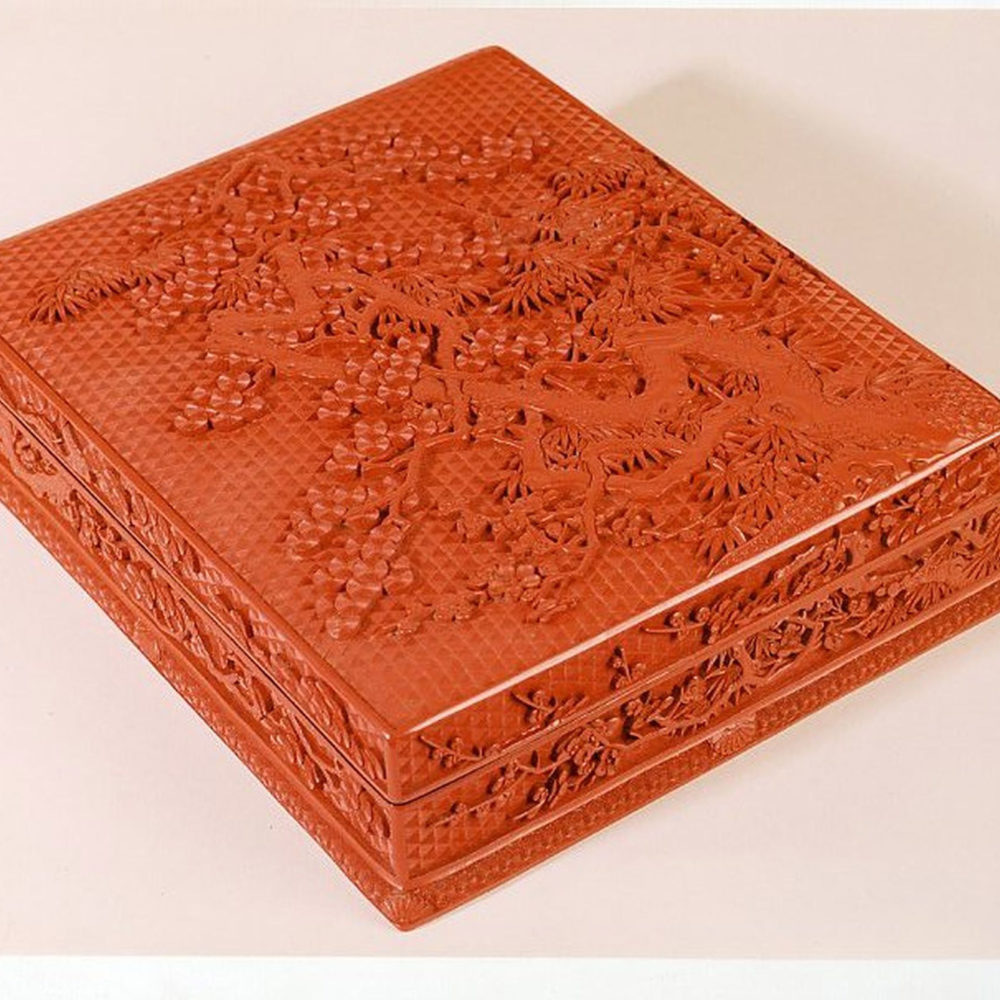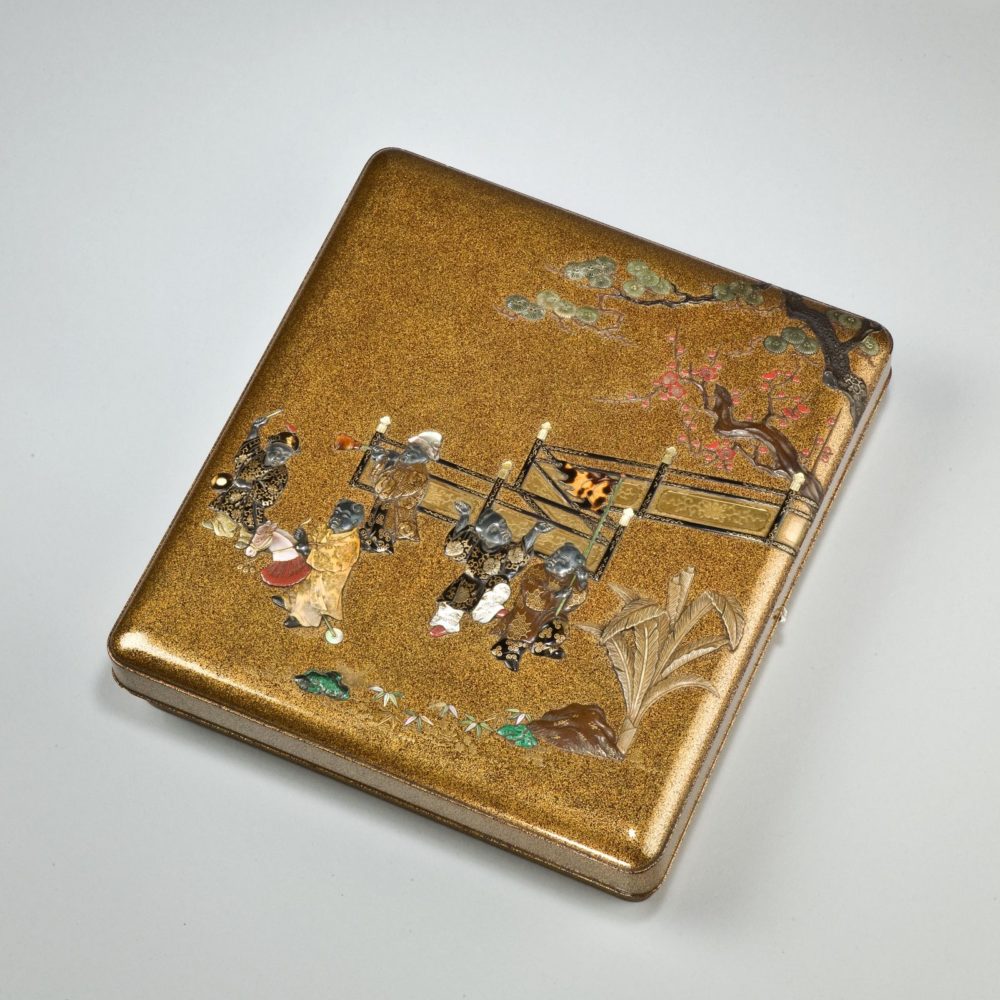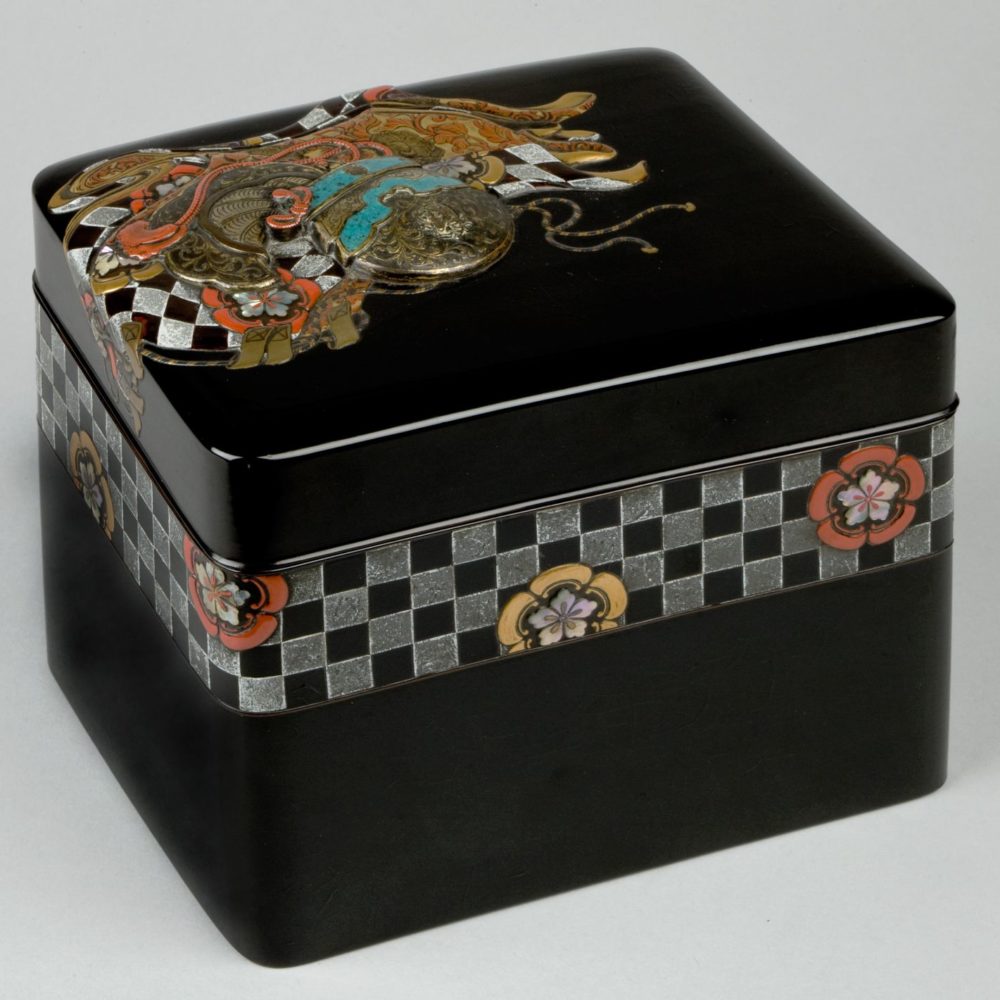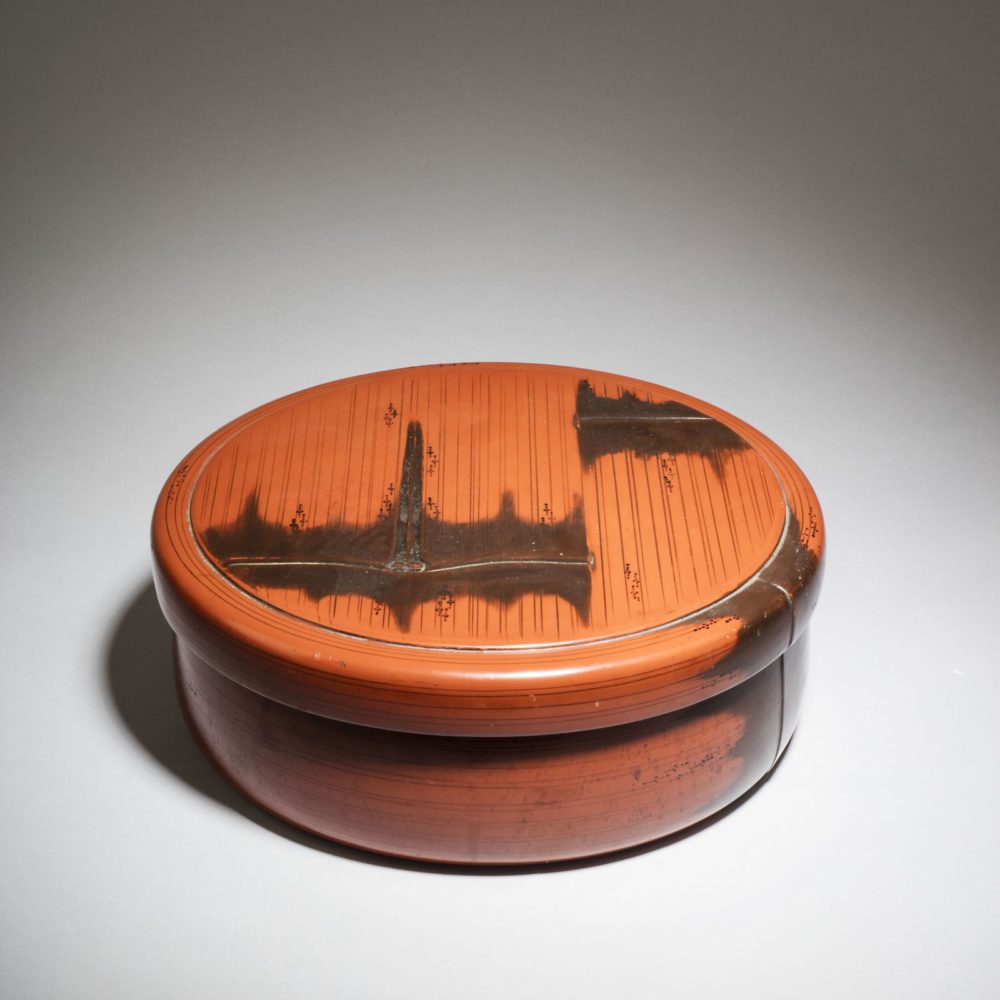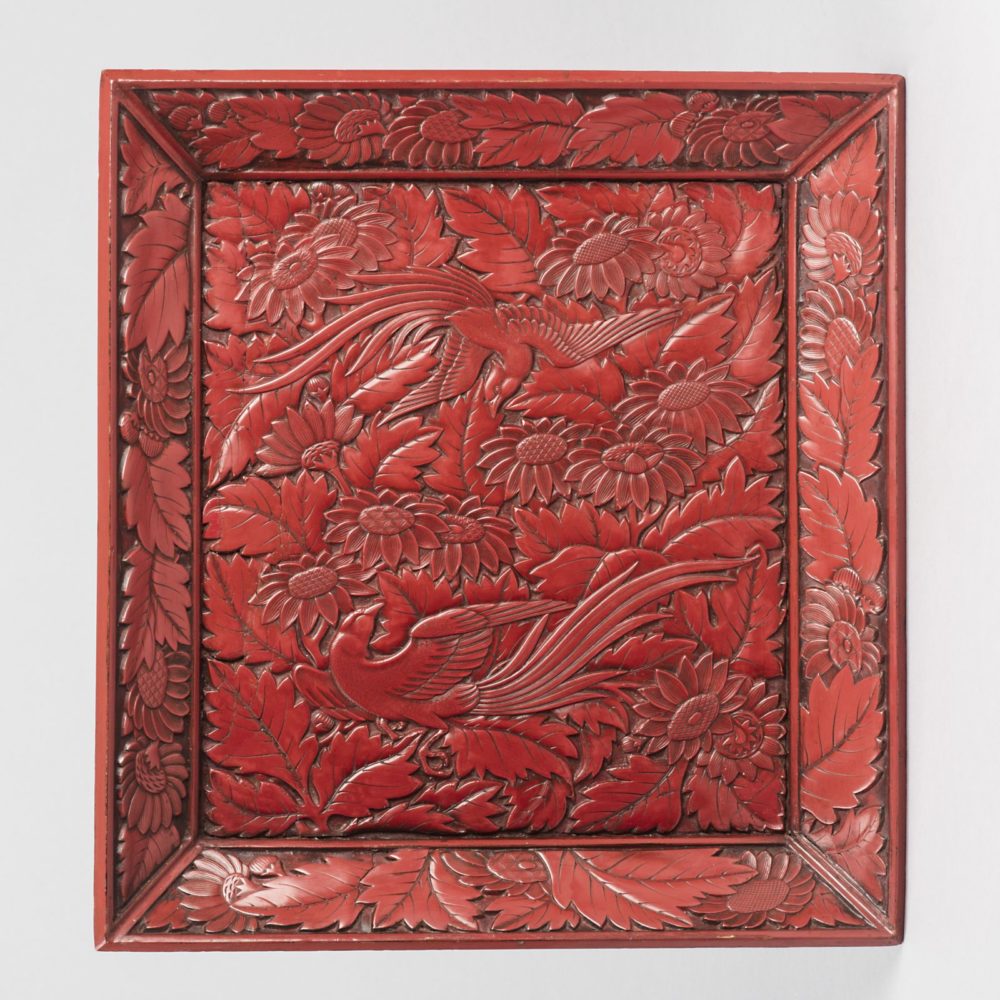Lacquer suzuribako [inkstone case], unsigned
19th century, Japan
24.8 x 27.3 cm; 9.76 x 10.75 inches
A rectangular box pierced with stylized clouds on the sides, with corresponding shaped indentations to the overhanging lid, the lid decorated in gold and silver to-gidashi, gold, silver, iro-e hiramaki-e, kirikane and aogai details on a kimpun-sprinkled roiro-nuri ground with egrets and crows among the forest, the tree trunks decorated with aogai inlays of grass scripts, reading koe suru [voice sounds], the underside of the lid and the interior of the box lacquered in gold togidashi, hirama-ki-e and kirikane on a nashiji and kimpun dusted ground with banks of clouds, the box fitted with a full-moon shaped inkstone nestling between two removable silver-rimmed cloud banks, one of which with a silver cloud-shaped inlay along with a re-cess shaped in the form of stylized clouds to accommodate a silver suiteki [waterdropper], signed Yoshinobu saku, the suiteki inscribed Yoru and continues to the silver inlay reading fukaki [deep at night], the rims of both box and lid edged with silver; accompanied by two tomobako inscribed Ariake, Suzuribako, and the inside of the lid inscribed with a waka [poem] by Shokoin kando Koho shinno.
The poem by Shokoin kando koho shinno reads:
asa karasu koe suru
maki deto sue sue mo
ariake tsuki ha
nokane yoru fukaki
English translation:
crying of morning crows
to far end
early morning when the moon
can be seen, it is in the field
deep night
The content of the poem and name of the poet on the tomobako suggest that this suzuribako was specially ordered by the poet as a memento of his waka, a requisite of the imperial family members. Both the exceptional detailing of workmanship and the superior quality of the material used, further support this theory.
Similar Examples
A similar model of a cockerel in the collection of Marie Antoinette is illustrated Monika Kopplin, ‘Les lacques du Japan, Collections de Mair-Antoinette’, (Chateau de Versailles 2001), p.186, no.56


